

“Check Smart Cruise Control System” Hyundai: Fixed
January 29, 2023 3 min read
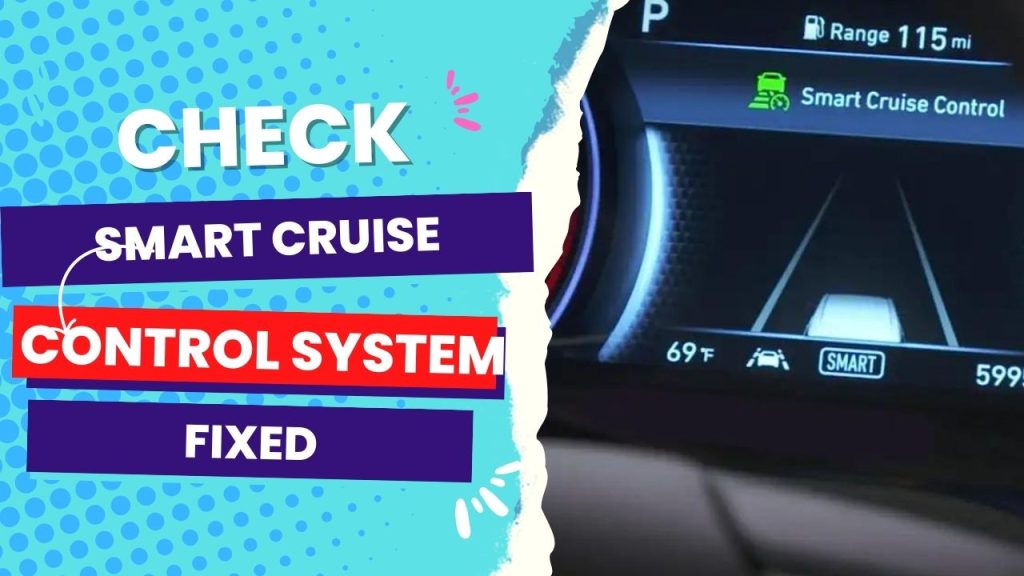
The Hyundai dashboard displays the message “Check Smart Cruise Control System” when one of the two systems that depend on the front-end radar sensor for the operation has electrical problems. A problem with your ABS hydraulic module could also cause it. If you recently experienced a dead battery, drove through a car wash, or were involved in an accident, this problem might happen.
One of the standout features of most Hyundai models is Smart Cruise Control. It is an active safety technology that enables your vehicle to automatically maintain a driver-selected distance from any vehicle ahead in the same lane.
It could be that you were driving your EV when it began to frantically display “Check AEB system” and “Check smart cruise control system” before saying that intelligent cruise control was disabled.
In many cases, the instrument cluster also lit up as a result.
The best action to take next is to give the front radar a quick wipe and see if the error goes away.
If it doesn’t, then the rest of this post will walk you through what to do.
You Can Skip To Sections Here
- 1 Other Causes of Hyundai’s “check Smart Cruise Control System” Alert?
- 2 Does insurance cover Hyundai sensor replacement?
- 3 But How Does the Smart Cruise Control Work on The Hyundai?
- 4 How Do I Turn Off Smart Cruise Control on My Hyundai?
- 5 “Hyundai Smart Cruise Control Conditions Not Met,” Meaning
- 6 Rounding off
Other Causes of Hyundai’s “check Smart Cruise Control System” Alert?
On many occasions, a recently dead battery or interference during an accident can cause the sensor to lose calibration and, in some cases, even be damaged. There may be other possible causes, but the general way to clear this warning is to re-calibrate the radar sensor.
Of course, you can drive your vehicle without these systems working, but eliminating the alert is the primary concern here, right?
If the warning does not go away after calibrating the radar sensor again, you have to replace it.
In another instance involving this error, the dealership discovered the issue was the ABS hydraulic module assembly after scanning the error code. The dealership had to call a technician to interpret the code and replace the assembly.
Does insurance cover Hyundai sensor replacement?
If push comes to shove, you’ll need to replace the radar sensor, but does this part get covered by insurance? Yes, provided the front-end collision repair was done through insurance.
This sensor requires a factory-level scan tool and particular parameters, so a dealer is required in this case, even if it’s only one radar sensor.
Still, there is a chance that it just needs the calibration to get working correctly.
But if the sensor is damaged, it would require replacement, so you have to get the insurance involved.
But How Does the Smart Cruise Control Work on The Hyundai?
Hyundai Smart Cruise Control is similar to other types of adaptive cruise control. First off, there is a forward-mounted radar system that constantly emits low-powered radar waves.
These waves reflect off of the preceding car in the same lane, allowing the radar system to determine the distance and speed of that car.
The active safety system allows your car to react to its environment automatically, keeping it at a specified highway speed without the need for you to continuously apply pressure on the accelerator.
For example, if your vehicle, equipped with Smart Cruise Control , is following a car that slows down or stops, the radar system detects the range and closing speed between the two vehicles and then prompts the Hyundai’s engine to reduce power.
So if you are getting a warning message about this feature, it means there’s interference in the performance of the radar sensor.
It is best to turn the SCC off until you clear the warning.
How Do I Turn Off Smart Cruise Control on My Hyundai?
To disengage the Smart Cruise Control on your Hyundai, press and hold the vehicle’s distant button for a few seconds. This will turn off the intelligent portion and allow your car to operate like any other cruise control.
You can also reset your cruise control and see if that eliminates the warning.
Take your foot off the gas pedal, step on the brake pedal only for one second while driving down, and observe how it resets the cruise control.
“Hyundai Smart Cruise Control Conditions Not Met,” Meaning
This message is sent when your cruise control is not working as it should. In most cases, the SCC conditions are not met when there is a broken vacuum line, an issue with the throttle control system, or the ABS itself.
I recommend you first look out for a blown fuse or short circuit when this happens since all the electrical systems in your Hyundai are pretty much fuse-controlled.
Meanwhile, the intelligent cruise control will not work as expected when the brake pedal switch is defective. The same thing goes for speed sensors.
Being part of the entire cruise control system, faults in these components need to be replaced for the SCC to work well.
To save time, I suggest you use an OBD II scanner to check for any trouble codes you may be getting.
This is an easy way to navigate to the actual problem linked to your cruise control system and have it addressed.
Rounding off
The bottom line is that when you have the “Check Smart Cruise Control System” warning display on your Hyundai, it is most likely a sign that your car has errors in the history for the radar unit and the central control unit related to communication errors.
It may not necessarily stem from a communication cable, and it can be hard to figure out which exact unit is at fault unless you take it to the dealership while the error occurs (without switching off the ignition so that the error is not cleared).
The effect of this error is that it seizes AEB and cruise control. But rest assured that it won’t result in “limping home” mode.
In my experience with the “Check Smart Cruise Control System” warning display, my vehicle usually handled it despite the dashboard being lit up.
The SCC is an excellent feature of Hyundai, But faults like this make us weary of self-driving cars.
- hyundai ioniq Help
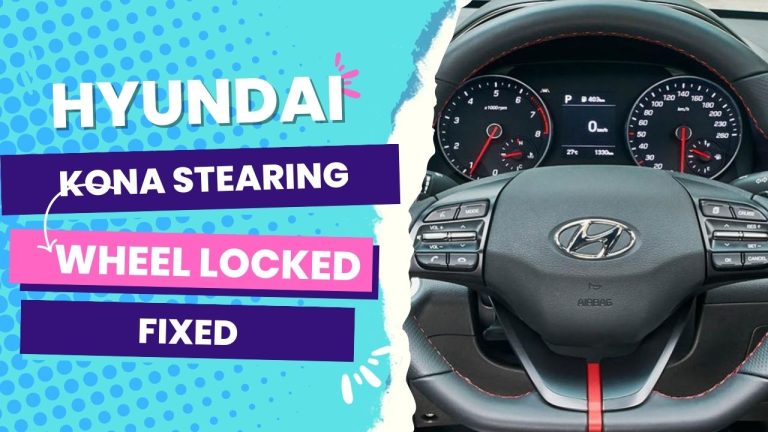
Hyundai Kona Steering Wheel Locked: Fixed
Hyundai Ioniq Not Charging: Fixed
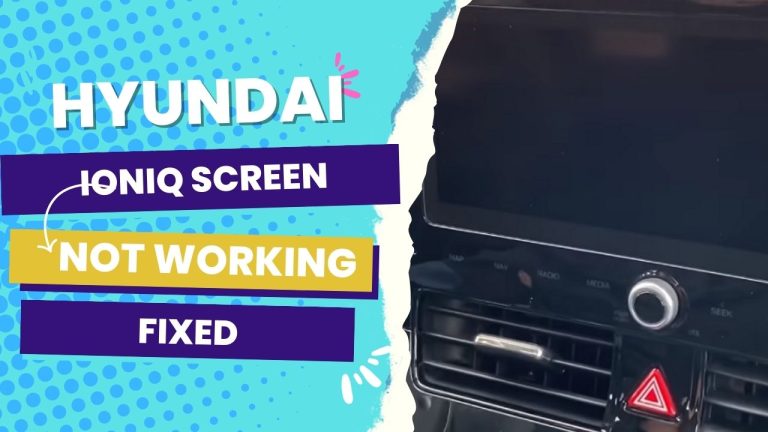
Hyundai Ioniq Screen Not Working: Fixed

- Forum Listing
- Marketplace
- Advanced Search
- Hyundai IONIQ Model Specific Forum
- Hyundai IONIQ Hybrid ('17-'21)
- US ICCU Recall (aka 12V battery failure issue). Please use the following thread, this pertains to all eGMP models. Please do not create duplicate threads on this topic. Thread
Check Smart Cruise Control System error message after replacing 12v battery
- Add to quote
Hi all. The title says it all really. I recently had RAC out to replace the 12v battery which went dead, and since that I've had a message on the dash saying "Check Smart Cruise Control System" and another icon indicating that it is disabled. Authorised Hyundai dealer wants £95 for the pleasure of just looking at it, so before I choose between that or heating my house for half an hour, I was wondering if there is anything that I can do myself to troubleshoot / resolve? Thanks in advance Ross
If your car's still under warranty, find another dealership to look at it and don't tell them about the RAC. Replacing a battery should be unrelated, but you don't want to create a negative association in their mind before they even start the job.
Can't see how replacing the 12V battery would cause that . As KevinT says it should be a warranty repair if your Ioniq is under 5 years old . If it's the Mark 1 hybrid maybe your sensor plate is very dirty ? , that's the clear plastic plate with the Hyundai logo on it
Thanks both for your responses. Unfortunately (and typically) the car is about 2 months out of warranty. It is a '17 plate so assume that makes it a Mark 1 hybrid. As far as I can tell the sensor plate looks fine externally, and it seems like too big a coincidence that this would happen immediately after the battery replacement. I did speak to a Hyundai rep on the phone and they mentioned the smart cruise control maybe needing reconfiguring and he initially said that it may do that itself while driving. But unfortunately not!
I'd still give the sensor a little clean anyway . I still can't see how changing the battery would lead to this , more likely that the firmware corrupted when he battery went flat . All recommendations in the manual indicate that you should take it to authorized Hyundai dealer . Maybe alert the RAC that this situation only arose after their intervention ?
- ?
- 265.3K posts
- 32.7K members
Top Contributors this Month
- Locate a Dealer
- Dealer Login
Hyundai resources
For Hyundai dealers
Now viewing
Getting to know the 2020 Hyundai Sonata SmartSense Features
Stay informed about the smartsense technology packed into the 2020 hyundai sonata with our comprehensive guide on myhyundai..
The 2020 Sonata has been equipped with the latest in Hyundai SmartSense technology, which includes an array of safety and driving assist features designed to alert and help you in various driving situations.
In this article, we will lay out which features are on your Sonata, inform you of their purpose, and show you where you can go for more information. Keep in mind that your owner’s manual is always the best source for the most detailed information.
Standard on all 2020 Sonata models
All 2020 Sonata models are equipped with the following SmartSense features:
- Forward Collision Avoidance Assist w/ Pedestrian Detection (FCA) Warns you of a decelerating or stopped vehicle or a pedestrian detected ahead and will apply braking if necessary. 1
- Smart Cruise Control with Stop & Go (SCC) Uses radar to keep you a safe distance from the car ahead when traveling below your set cruise control speed. 2
- Lane Keeping Assist (LKA) Provides light and sound alerts if you drift out of a detected lane. 3
- Lane Follow Assist (LFA) Helps keep you centered in a detected lane. 3
- Driver Attention Warning (DAW) Warns you if sensors detect drowsy or inattentive driving. 4
- High Beam Assist (HBA) Senses oncoming traffic to automatically engage or disengage high beams.
- Rear Occupant Alert (ROA) door logic Reminds you of rear occupants when engine is turned off. 5
Standard on: SEL SEL PLUS Limited
Stepping up to the SEL, SEL Plus or Limited, you will gain the following SmartSense features:
- Blind Spot Detection (BSD) Provides an audio and visual alert when a vehicle in an adjacent lane is in the least visible location. 6
- Blind Spot Collision Avoidance Assist (BCA) Applies brakes if you use your signals when a vehicle is in that side’s blind spot. 6
- Rear Cross-TrafficCollision-Warning (RCCW) The RCCA helps you back out safely by warning you if a vehicle is approaching from either side. 7
More information on these SmartSense features can be found at the Hyundai SmartSense information website .
Standard on: with Drive Guidance Package, SEL Plus with Tech Package Limited
Highway Drive Assist (HDA) enhances the Smart Cruise Control system by helping to keep your vehicle centered in your lane while using GPS data to know if you are on a controlled access highway such as an interstate. This system can be set to keep your vehicle at the highway speed limit.
Although the HDA system is an assist for long highway driving, it is not designed to drive the car for you. If you take your hands off the wheel for more than a few seconds, the system will remind you to regain steering wheel control. 8
Standard on Limited
As an owner of a Limited model, you quite simply have everything the Sonata has to offer, including these sophisticated driving aids:
- Surround View Monitor (SVM) With Surround View Monitor, you can park perfectly every time on the first try. By having the wide touch-screen display a combination of the view from cameras on the front, back and either side, it is as though you can look directly down from above your Sonata as you are driving it. You can now see the parking space lines when you need them the most. In addition, icons on the screen let you select specific views from the cameras, letting you see possible obstructions unseen from the driver seat.
- Blind View Monitor (BVM) Just as the rear-view camera automatically activates when you select Reverse, the Blind View Monitor, activates automatically when you engage the turn signal while in Drive. Using a camera mounted below each outside mirror, the system displays an image on the instrument cluster display (temporarily replacing the tachometer for the left side, speedometer for right), providing a more comprehensive view of possible vehicles in the adjacent lane than can be seen from the mirror alone. 9
For information on the 2020 Sonata’s smartphone integration features, please click here .
For information on the 2020 Sonata’s other technical features, please click here .
Disclaimers
- The Forward Collision Avoidance Assist with Pedestrian Detection (PED) is intended to be a supplement to safe driving practices. The system is not designed to detect certain stationary objects such as trees or poles, and may not detect all vehicles or pedestrians under certain conditions. The system is a driver assistance system and is not a substitute for safe driving. The driver is responsible for being attentive and maintaining control of the vehicle, and should not wait for the system's alerts before braking as there may not be sufficient time to brake safely. Refer to your Owner's Manual for more information.
- Smart Cruise Control (SCC) is not a collision avoidance or warning device. SCC is for highway use only and should not be used in poor weather, heavy or varying traffic, or on winding or slippery roads. Driver remains responsible to slow or stop the vehicle to avoid a collision.
- The Lane Departure Warning System with Lane Keep Assist operates above approximately 44 mph and only when the lane markings are clearly visible on the road. It will not prevent loss of control. Refer to your owner's manual for more information.
- It is the driver's responsibility to remain alert at all times. Driver Attention Warning is only a warning to inform the driver of a potential lack of driver attention or drowsiness. It does not detect and provide an alert in every situation.
- When the vehicle is parked and the engine has been turned off, the Rear Occupant Alert can help to alert the driver if the rear door(s) had been opened at any point after the vehicle was unlocked at the beginning of the journey. Upon turning the engine off, Rear Occupant Alert will provide a visual alert on the instrument cluster. Rear Occupant Alert is not a substitute for driver attentiveness. Never leave a child unattended in a vehicle. See Owner's Manual for further details and limitations.
- The Blind Spot Detection assists the driver by warning of other cars in the blind spot region. It senses the rear side territory of the vehicle when it is traveling over 20 mph. There are limitations to the function, range, detection and clarity of the system. It will not detect all vehicles or objects in the blind spot. Its operation depends on the size, distance, angle and relative speed difference between your car and other cars. Blind Spot Detection may not operate if sensors are obscured in any way. Do not rely exclusively on Blind Spot Detection. Blind Spot Detection is a supplemental system and the driver must still be attentive and exercise caution when driving with it. It is important to always signal, look over your shoulder and through your mirrors before changing lanes. It is the driver's responsibility to be aware of the surroundings and ensure it is clear before changing lanes or directions. Blind Spot Detection is only meant to assist the driver in these responsibilities.
- Rear Cross-Traffic Collision-Warning (RCCW) helps drivers back out of a parking space by detecting traffic coming from either side of the vehicle. It can alert the driver of a potential hazard. RCCW is active when the vehicle is in reverse gear and operating at low speeds. Never rely exclusively on RCCW when exiting a parking space, it is not a substitute for attentive driving. See Owner's Manual for important details and limitations.
- Highway Driving Assist, when used in conjunction with Lane Following Assist and Smart Cruise Control, is for highway use only and can help keep the vehicle centered in its lane while maintaining a safe distance from the vehicle ahead only when the lane markings are clearly visible on the road and should not be used in poor weather, heavy or varying traffic, or on winding or slippery roads. HDA will not work under all circumstances and will not prevent loss of control. Driver remains responsible to slow or stop the vehicle to avoid a collision. See Owner's Manual for details.
- Blind-Spot View Monitor (BVM) assists driver in changing lanes by providing a live view of the blind spots on either side of the vehicle and an audible alert if another vehicle is detected. Turn signal must be activated and other system limitations apply. Do not rely exclusively on BSVM. It is the driver's responsibility to be aware of the surroundings and ensure it is clear before changing lanes or directions. See Owner's Manual for further details and limitations.It is the driver's responsibility to remain alert at all times. Driver Attention Warning is only a warning to inform the driver of a potential lack of driver attention or drowsiness. It does not detect and provide an alert in every situation.
Getting Started FAQS
Related resources.

Need more assistance?
Enter your new hyundai vin, what's a vin.
A unique 17-character serial number used to identify individual motor vehicles.
Where do I find my VIN?
- Driver's side dashboard - Inside driver's side door jamb - Vehicle insurance card - Vehicle title record (pink slip)
6LdI_r4UAAAAAGFj6p7mcWYhvlmYp8WhwPo0ptXD
Create an account.

Are you sure this is the email address you want to use?
Login to MyHyundai
Your browser doesn't support HTML5 video. Download the video instead.
Hyundai How-To Videos

Smart Cruise Control Overview | Hyundai
Model shown in video is for demonstration purposes only. Availability and functionality on your vehicle may vary.

MyHyundai is your place to join, research, browse and learn. Visit MyHyundai today!
Recommended for you.
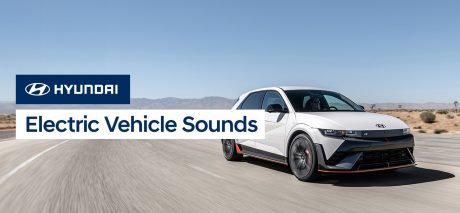
Auto User Guide

2023 Hyundai Kona Smart Cruise Controls | Intructions And Usage
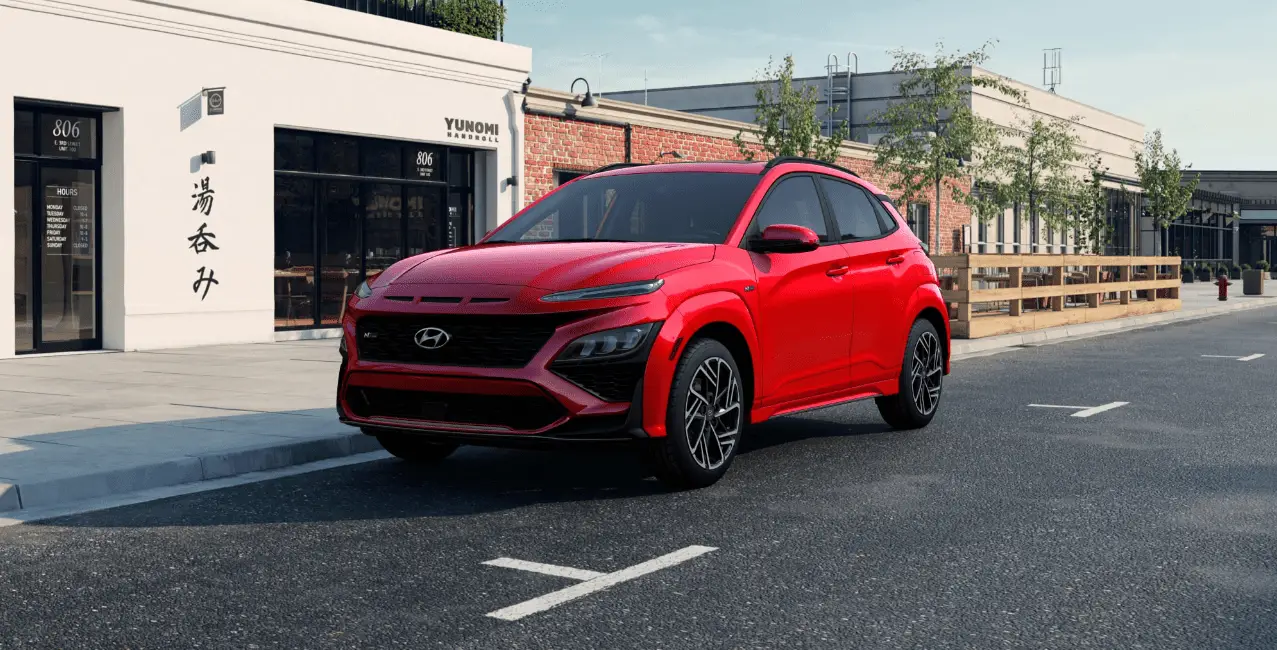
Table of Contents
Hyundai Kona 2023 Smart Cruise Control (SCC)
The 2023 Hyundai Kona’s state-of-the-art Smart Cruise Control system redefines safety and convenience. With the help of this cutting-edge function, drivers can easily maintain a safe following distance from the car in front of them and set the required speed. The Smart 2023 Hyundai Kona adaptive cruise control is made for driving on both highways and cities. It senses traffic conditions and adjusts its speed and braking automatically to keep you in control without requiring you to continuously depress the brake pedal. Smart Cruise Control, a unique technology that elevates driving and establishes a new benchmark in the small SUV market, is available on the 2023 Hyundai Kona . It has adjustable settings, can manage stop-and-go traffic, and also improves fuel efficiency.
2023 Hyundai KONA Specs, Price, Features, Milage (Brochure)
Overtaking Acceleration Assist While Smart Cruise Control is operating, if the function judges that the driver is determined to overtake the vehicle in front, acceleration will be assisted.
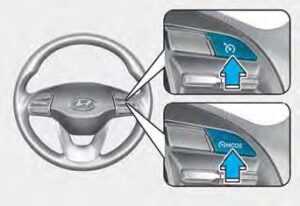
- Front view camera (if equipped),
- Front radar
The front view camera and front radar are used as a detecting sensor to help detect the vehicles in front. Refer to the picture above for the detailed location of the detecting sensor.
CAUTION Always keep the front view camera and front radar in good condition to maintain optimal performance of Smart Cruise Control. For more details on the precautions of the front view camera and front radar, refer to the “Forward Collision-Avoidance Assist (FCA)” section in chapter 7.
To turn on Smart Cruise Control Press the Driving Assist button to turn the Smart Cruise Control Settings Setting features on Smart Cruise Control. The speed will be set to the current speed on the cluster. If there is no vehicle in front of you, the set speed will be maintained, but if there is a vehicle in front of you, the speed may decrease to maintain the distance to the vehicle ahead. If the vehicle ahead accelerates, your vehicle will travel at a steady cruising speed after accelerating to the set speed.
Information If your vehicle speed is between 0~20 mph (0~30 km/h) when you press the Driving Assist button, the set speed will be set to 20 mph (30 km/h). The Driving Assist button symbol may vary depending on your vehicle option.

To set vehicle distance Each time the button is pressed, the vehicle distance changes as follows:
Information If you drive at 56 mph (90km/h), the distance is maintained as follows:
- Distance 4 – approximately 172 ft. (52.5 m)
- Distance 3 – approximately 130 ft. (40 m)
- Distance 2 – approximately 106 ft. (32.5 m)
- Distance 1 – approximately 82 ft. (25 m)
The distance is set to the last set distance when the engine is restarted, or when Smart 2023 hyundai kona adaptive cruise control was temporarily canceled.
To increase speed

- Push the + switch up and release it immediately. The cruising speed will increase by 1 mph (1 km/h) each time the switch is operated in this manner.
- Push the + switch up and hold it while monitoring the set speed on the cluster. The cruising speed will increase by 5 mph (10 km/h) each time the switch is operated in this manner. Release the switch when the desired speed is shown, and the vehicle will accelerate to that speed. You can increase the set speed to 110 mph (100 km/h).
WARNING Check the driving condition before using the + switch. Driving speed may sharply increase when you push up and hold the + switch.

To decrease speed Push the – switch down and release it immediately. The cruising speed will decrease by 1 mph (1 km/h) each time the switch is operated in this manner. Push the – switch down and hold it while monitoring the set speed on the cluster. The cruising speed will decrease by 5 mph (10 km/h) each time the switch is operated in this manner. Release the switch at the speed you want to maintain. You can decrease the set speed to 20 mph (30 km/h).
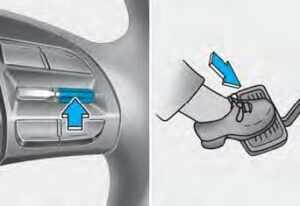
To temporarily cancel Smart Cruise Control Press the switch or depress the brake pedal to temporarily cancel Smart Cruise Control.
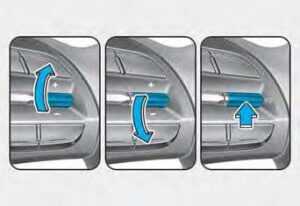
To resume Smart Cruise Control To resume Smart Cruise Control after the function was canceled, operate the +, – or switch. If you push the + switch up or – switch down, vehicle speed will be set to the current speed on the cluster. If you press the switch, vehicle speed will resume to the preset speed.

To turn off Smart Cruise Control Press the Driving Assist button to turn Smart Cruise Control off.

Smart Cruise Control Reaction With the engine on, select the ‘Driver settings menu to select the sensitivity of vehicle speed when following the front vehicle to maintain the set distance.
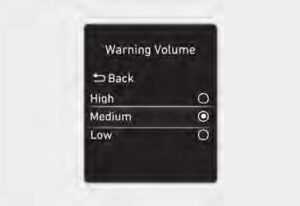
Warning Volume With the engine on, select ‘Driver Settings menu to change the Warning Smart Cruise Control. If you change the Warning Volume, the Warning Volume of other Driver Assistance systems may change.
Information If the engine is restarted, Warning Volume will maintain the last setting.
Smart Cruise Control Operation Operating conditions Smart Cruise Control will operate when the following conditions are satisfied.
Basic function
- The gear is in D (Drive)
- EPB (Electronic Parking Brake) is not applied
- 5~110 mph (10~180 km/h): when there is no vehicle in front
- 0~110 mph (0~180 km/h): when there is a vehicle in front
- ESC (Electronic Stability Control) or ABS (Anti-Lock Braking System) is on
- ESC (Electronic Stability Control) or ABS (Anti-Lock Braking System) is not controlling the vehicle
- Engine rpm is not in the red zone
- Forward Collision-Avoidance Assist brake control is not operating (if equipped)
- Remote Smart Parking Assist brake control is not operating
Information When stopped behind another vehicle, the driver can turn on Smart Cruise Control while the brake pedal is depressed.
Overtaking Acceleration Assist Overtaking Acceleration Assist will operate when the turn signal indicator is turned on to the left (left-hand drive) or turned on to the right (right-hand drive) while Smart Cruise Control is operating, and the following conditions are satisfied:
- Your vehicle speed is above 40 mph (60 km/h)
- The hazard warning flasher is off
- A vehicle is detected in front of your vehicle
- Deceleration is not needed to maintain distance from the vehicle in front
WARNING When the turn signal indicator is turned on to the left (left-hand drive) or turned on to the right (right-hand drive) while there is a vehicle ahead, the vehicle may accelerate temporarily. Pay attention to the road conditions at all times. Regardless of your country’s driving direction, Overtaking Acceleration Assist will operate when the conditions are satisfied. When using the function in countries with different driving directions, always check the road conditions at all times.
Smart Cruise Control Display and Control
Basic function You can see the status of the Smart Cruise Control operation in the Driving Assist mode on the cluster. Refer to the “LCD Display Modes” section in chapter 4. Smart Cruise Control will be displayed as below depending on the status of the function.
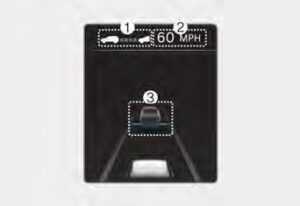
When operating
- Whether there is a vehicle ahead and the selected distance level are displayed.
- Set speed is displayed.
- Whether there is a vehicle ahead and the target vehicle distance are displayed.
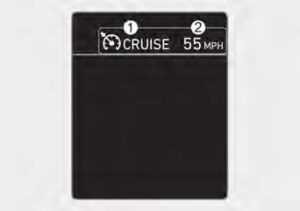
When temporarily canceled indicator is displayed. The previous set speed is shaded.
Information
- The distance of the front vehicle on the cluster is displayed according to the actual distance between your vehicle and the vehicle ahead.
- The target distance may vary according
To temporarily accelerate
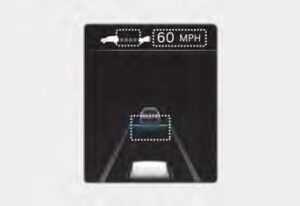
If you want to speed up temporarily without altering the set speed while Smart Cruise Control is operating, depress the accelerator pedal. While the accelerator pedal is depressed, the set speed, distance level and target distance will blink on the cluster. However, if the accelerator pedal is depressed insufficiently, the vehicle may decelerate.
WARNING Be careful when accelerating temporarily, because the speed and distance is not controlled automatically even if there is a vehicle in front of you.
Smart Cruise Control temporarily canceled

Smart Cruise Control will be temporarily canceled automatically when:
- The vehicle speed is above 120 mph (190 km/h)
- The accelerator pedal is continuously depressed for a certain period of time
- The conditions for the Smart Cruise Control to operate is not satisfied
- If Smart Cruise Control is temporarily canceled automatically, the ‘Smart message will appear on the cluster, and an audible warning will sound to warn the driver.
- If Smart Cruise Control is temporarily canceled while the vehicle is at a standstill with the function activated, EPB (Electronic Parking Brake) may be applied.
WARNING When Smart Cruise Control is temporarily canceled, distance with the front vehicle will not be maintained. Always have your eyes on the road while driving, and if necessary, depress the brake pedal to reduce your driving speed in order to maintain a safe distance.
Smart Cruise Control conditions not satisfied

If the Driving Assist button, + switch, – switch or switch is operated when Smart Cruise Control operating conditions are not satisfied, the ‘Smart appear on the cluster, and an audible warning will sound.
In traffic situation

In traffic, your vehicle will stop if the vehicle ahead of you stops. Also, if the vehicle ahead of you starts moving, your vehicle will start as well. In addition, after the vehicle has stopped and a certain time have passed, the ‘Use switch or on the cluster. Depress the accelerator pedal or operate the + switch, – switch or switch to start driving.
Warning road conditions ahead
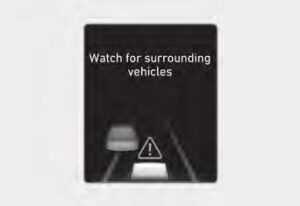
In the following situation, the ‘Watch for will appear on the cluster, and an audible warning will sound to warn the driver of road conditions ahead. The vehicle in front disappears when Smart Cruise Control maintains the distance from the vehicle ahead while driving below a certain speed. While the ‘Use switch or pedal to the cluster, if there is no vehicle in front of the vehicle is far away from you, and the + switch, – switch or
WARNING Always pay attention to vehicles or objects that may suddenly appear in front of you, and if necessary, depress the brake pedal to reduce your driving speed in order to maintain a safe distance.
Collision Warning
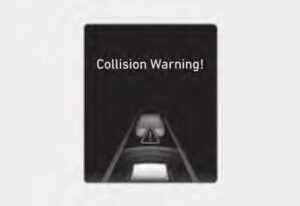
While Smart Cruise Control is operating, when the collision risk with the vehicle warning message will appear on the cluster, and an audible warning will sound to warn the driver. Always have your eyes on the road while driving, and if necessary, depress the brake pedal to reduce your driving speed in order to maintain a safe distance.
WARNING In the following situations, Smart Cruise Control may not warn the driver of a collision.
- The distance from the front vehicle is near, or the vehicle speed of the front vehicle is faster or similar to your vehicle
- The speed of the front vehicle is very slow or is at a standstill
- The accelerator pedal is depressed right after Smart Cruise Control is turned on
WARNING Take the following precautions when using Smart Cruise Control:
- Smart Cruise Control does not substitute for proper and safe driving. It is the responsibility of the driver to always check the speed and distance to the vehicle ahead.
- Smart Cruise Control may not recognize unexpected and sudden situations or complex driving situations, so always pay attention to driving conditions and control your vehicle speed.
- Keep Smart Cruise Control off when the function is not in use to avoid inadvertently setting a speed.
- Do not open the door or leave the vehicle when Smart Cruise Control is operating, even if the vehicle is stopped.
- Always be aware of the selected speed and vehicle distance.
- Keep a safe distance according to road conditions and vehicle speed. If the vehicle distance is too close during high-speed driving, a serious collision may result.
- When maintaining distance from the vehicle ahead, if the front vehicle disappears, the function may suddenly accelerate to the set speed. Always be aware of unexpected and sudden situations from occurring.
- Vehicle speed may decrease on an upward slope and increase on a downward slope.
- Always be aware of situations such as when a vehicle cuts in suddenly.
Smart Cruise Control disabled
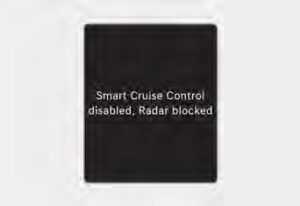
When the front radar cover or sensor is covered with snow, rain, or foreign material, it can reduce the detecting performance and temporarily limit or disable Smart Cruise Control. If this occurs the ‘Smart Cruise Control message will appear for a certain period of time on the cluster. Smart Cruise Control will operate normally when snow, rain, or foreign material is removed.
CAUTION Even though the warning message does not appear on the cluster, Smart Cruise Control may not properly operate.
CAUTION Smart Cruise Control may not properly operate in an area (for example, open terrain), where there is nothing to detect after turning ON the engine.
Limitations of Smart Cruise Control Smart Cruise Control may not operate normally, or it may operate unexpectedly under the following circumstances:
- The detecting sensor or the surroundings are contaminated or damaged
- Washer fluid is continuously sprayed, or the wiper is on
- The camera lens is contaminated due to tinted, filmed, or coated windshield, damaged glass, or sticky foreign material (sticker, bug, etc.) on the glass
- Moisture is not removed or frozen on the windshield
- The field of view of the front view camera is obstructed by sun glare
- Street light or light from an oncoming vehicle is reflected on the wet road surface, such as a puddle on the road
- The temperature around the front view camera is high or low
- An object is placed on the dashboard
- The surrounding is very bright
- The surrounding is very dark, such as in a tunnel, etc.
- The brightness changes suddenly, for example when entering or exiting a tunnel
- The brightness outside is low, and the headlights are not on or are not bright
- Driving in heavy rain or snow, or thick fog
- Driving through steam, smoke, or shadow
- Only part of the vehicle is detected
- The vehicle in front has no tail lights, tail lights are located unusually, etc.
- The brightness outside is low, and the tail lamps are not on or are not bright
- The rear of the front vehicle is small or does not look normal (for example, tilted, overturned, etc.)
- A vehicle suddenly cuts in front
- Your vehicle is being towed
- Driving through a tunnel or iron bridge
- Driving near areas containing metal substances, such as a construction zone, railroad, etc.
- The temperature around the front radar is high or low
- Driving in large areas where there are few vehicles or structures (for example, desert, meadow, suburb, etc.)
- Driving near a highway (or motorway) interchange or tollgate
- Driving on a slippery surface due to snow, water puddles, ice, etc.
- Driving on a curved road
- The vehicle in front is detected late The vehicle in front is suddenly blocked by an obstacle
- The vehicle in front suddenly changes
- The vehicle in front is bent out of shape
- With a vehicle in front, your vehicle changes lanes at low speed
- The vehicle in front is covered with snow
- Unstable driving
- You are on a roundabout and the vehicle in front is not detected
- You are continuously driving in a circle Driving in a parking lot
- Driving through a construction area, unpaved road, partially paved road, uneven road, speed bumps, etc.
- Driving on an inclined road, curved road, etc.
- Driving through a roadside with trees or streetlights
- The adverse road conditions cause excessive vehicle vibrations while driving
- Your vehicle height is low or high due to heavy loads, abnormal tire pressure, etc.
- Driving through a narrow road where trees or grass are overgrown
- There is interference by electromagnetic waves, such as driving in an area with strong radio waves or electrical noise

- Vehicles offset to one side
- Slow-moving vehicles or sudden-decelerating vehicles
- Oncoming vehicles
- Stopped vehicles
- Vehicles with small rear profiles, such as trailers
- Narrow vehicles, such as motorcycles or bicycles
- Special vehicles
- Animals and pedestrians
Adjust your vehicle speed by depressing the brake pedal according to the road and driving conditions ahead.

In the following cases, the vehicle in front cannot be detected by the sensor:
- Vehicles with higher ground clearance or vehicles carrying loads that stick out of the back of the vehicle
- Vehicles that have the front lifted due to heavy loads
- You are steering your vehicle
- Driving on narrow or sharply curved roads
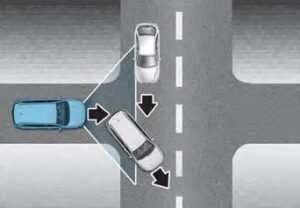
- Always look out for pedestrians when your vehicle is maintaining a distance from the vehicle ahead.
Information This device complies with Part 15 of the FCC rules.
Operation is subject to the following three conditions:
- This device may not cause harmful interference, and
- This device must accept any interference received, including interference that may cause undesired operation.
- Changes or modifications not expressly approved by the party responsible for compliance could void the user’s authority to operate the device.
Information Radiofrequency radiation exposure information:
- This equipment complies with FCC radiation exposure limits set forth for an uncontrolled environment.
- This equipment should be installed and operated with a minimum distance of 8 in. (20 cm) between the radiator (antenna) and your body.
- This transmitter must not be co-located or operating in conjunction with any other antenna or transmitter.
The Smart Cruise Control in the 2023 Hyundai Kona is an advanced cruise control system designed to automatically maintain a set speed and following distance from the vehicle in front.
To activate the Smart Cruise Control, press the cruise control button on the steering wheel and set your desired speed.
Yes, you can typically adjust the following distance using the controls on the steering wheel or through the vehicle’s infotainment system.
It will automatically slow down and maintain a safe following distance from the slower vehicle until it can resume the set speed.
Yes, you can override the system at any time by using the brake pedal or accelerator or by turning off the cruise control.
Some systems are capable of low-speed following and can work in stop-and-go traffic, while others may not function at very low speeds.
Some systems may provide warnings or alerts if a collision is imminent or if the driver needs to take over control.
Yes, you can typically customize settings like the following distance, speed, and sensitivity through the vehicle’s settings menu.
It may work less effectively in adverse weather conditions like heavy rain, snow, or fog, and may prompt the driver to take over more frequently.
While it’s designed primarily for highway use, you can often use it on well-marked city streets with clear lane markings.
Yes, there is typically a maximum speed at which the system can be set, and it may vary by model and region.
It can help improve fuel efficiency by maintaining a consistent speed and reducing unnecessary acceleration and braking.
Availability may vary depending on the specific trim level and options chosen.
You can turn off the Smart Cruise Control by pressing the cancel button on the steering wheel or by tapping the brake pedal.
Updates may be possible through software updates provided by the manufacturer or dealer.
Useful Link
View Full User Guide: Hyundai Kona 2023 User Guide Download Manuals: https://owners.hyundaiusa.com/us/en/resources/manuals-warranties.html 2023 Hyundai KONA Specs, Price, Features, Milage (Brochure)
- Tags 2023 , Assistance System , Auto User Guide , Control , Convenience , Cruise , Cruise Control , Driver Assistance System , Driving Convenience , Driving Safety , Hyundai , Hyundai 2023 , Hyundai Kona , Hyundai Kona 2023 , Hyundai Owner Manual , Hyundai User Guide , Kona , Kona 2023 , Kona Owner Manual , Kona User Guide , Owner Manual , Parking , Parking Safety , Safety , SCC , Smart Control , Smart Cruise , Smart Cruise Control , Smart Cruise Control (SCC) , User Guide
Leave a Reply Cancel reply
Your email address will not be published. Required fields are marked *
Save my name, email, and website in this browser for the next time I comment.
Log in / Register
You are using an out of date browser. It may not display this or other websites correctly. You should upgrade or use an alternative browser .
"Smart Cruise Control (SCC) conditions not met"
Discussion in ' Hyundai Kona Electric ' started by Taurus , May 29, 2022 .
To remove this ad click here.
Taurus New Member
I have Hyundai Kona Electric 2019 and I have had this error happen to me a couple of times before and today it happened again. When setting cruise control on I get a warning message "Smart Cruise Control (SCC) conditions not met" and it won't turn on. But there's no explanation what the conditions are and how to fix this? I tried pressing the brake pedal couple of times while driving. I stopped the car for couple of minutes. I took a longer coffee and car recharging break and restarted the car after that. I switched to normal cruise control to see if the front sensors were dirty, but normal cruise control didn't turn on either. Nothing helped. Smart Cruise Control worked fine yesterday but not today anymore. It was raining yesterday quite a lot and it was raining today as well, but not as much as yesterday. Any ideas how to fix this? I'm sorry if this has been asked before, but I didn't find any topics about this. Cheers!
hieronymous Active Member
This was a problem with my '19 when new. I stopped it when I realised that the Kona seems to be set up to expect regular use of the brake pedal in normal driving (no SCC) to check the brakes are working OK. I was using level 3 regen and no brake pedal for long distances, then it wouldn't reengage SCC if paused/stopped. I switched to level 1 regen + autoregen so I used the brake lightly a lot more, and the problem went away - not seen again.
Tim94549 Active Member
I had this happen a few times. I discovered all I had to do was tap the breaks, then I could set Cruise Control.. I always run GEN-3.
Tim94549 said: ↑ I had this happen a few times. I discovered all I had to do was tap the breaks, then I could set Cruise Control.. I always run GEN-3. Click to expand...
electriceddy Moderator Staff Member
Taurus said: ↑ I have Hyundai Kona Electric 2019 and I have had this error happen to me a couple of times before and today it happened again. When setting cruise control on I get a warning message "Smart Cruise Control (SCC) conditions not met" and it won't turn on. But there's no explanation what the conditions are and how to fix this? I tried pressing the brake pedal couple of times while driving. I stopped the car for couple of minutes. I took a longer coffee and car recharging break and restarted the car after that. I switched to normal cruise control to see if the front sensors were dirty, but normal cruise control didn't turn on either. Nothing helped. Smart Cruise Control worked fine yesterday but not today anymore. It was raining yesterday quite a lot and it was raining today as well, but not as much as yesterday. Any ideas how to fix this? I'm sorry if this has been asked before, but I didn't find any topics about this. Cheers! Click to expand...
![check smart cruise control system [IMG]](https://www.hyundaipartsdeal.com/resources/encry/part-picture/motor/2020/large/e484c7b1bdc063d677ff742d1a95584b/1c2a055f5054b50f5465d620d8e383f9.png)
Jimct Active Member
This happens to my Kona (2021 Ultimate) whenever I go longish periods without using the brakes, regardless of weather conditions. Tapping the brakes works for me every time. It's annoying to have to do that, though, especially on the highway, so I try to think to use the brakes for slowdown before I enter the highway.
Thanks for the replies everyone! I'll see what happens now when the car has dried out.
Wildeyed Well-Known Member
Was just driving my car and the car lurched and stopped accelerating, "Cruise Control Conditions No Met" message came on and then every warning light lit up. The motor powered down and the car basically stopped in a live lane. Gravity kept it creeping forward until I could get off the road. Turned off and on. Didn't fix anything. Disconnected battery and reconnected. Seemed to fix things. Started, drove stopped, started again. No issues. Drove 3km and then it all happened again. Dash fireworks, no power. Pulled over. Redid the whole 12 volt riggamarole, started up fine, drove 2 km back, it happened again as I was making a left turn across live traffic lanes. By this time I was thoroughly frustrated and tromped on the accelerator, the car lurched and jumped, loosing all motor power then accelerating. I managed to get into my driveway a kilometre away. Waiting now for the tow truck to take it to my dealer 45km away. They can't even look at it until next week! Well, I had a couple of hundred kilometres of quiet driving with my nice new drive train before it became crippled again. I guess I shouldn't have been so upbeat.
Chris Alemany Active Member
Here's the dash.
Wildeyed said: ↑ Was just driving my car and the car lurched and stopped accelerating, "Cruise Control Conditions No Met" message came on and then every warning light lit up. The motor powered down and the car basically stopped in a live lane. Gravity kept it creeping forward until I could get off the road. Turned off and on. Didn't fix anything. Disconnected battery and reconnected. Seemed to fix things. Started, drove stopped, started again. No issues. Drove 3km and then it all happened again. Dash fireworks, no power. Pulled over. Redid the whole 12 volt riggamarole, started up fine, drove 2 km back, it happened again as I was making a left turn across live traffic lanes. By this time I was thoroughly frustrated and tromped on the accelerator, the car lurched and jumped, loosing all motor power then accelerating. I managed to get into my driveway a kilometre away. Waiting now for the tow truck to take it to my dealer 45km away. They can't even look at it until next week! Well, I had a couple of hundred kilometres of quiet driving with my nice new drive train before it became crippled again. I guess I shouldn't have been so upbeat. Click to expand...
Wildeyed said: ↑ View attachment 16662 Here's the dash. Click to expand...
electriceddy said: ↑ Hopefully a connector was not locked in place during repairs and came loose or coolant clamp on a hose , possible 12V failure as well...who knows. Any sign of fluid leaked out, reservoir level OK?, or measured the 12V residual voltage level at the battery terminals? It definitely sounds like an issue that started during the repair process, seeing as it never occurred previous. Click to expand...

Wildeyed said: ↑ Blue link health status reported as "All Systems Normal" Click to expand...

Jimct said: ↑ This happens to my Kona (2021 Ultimate) whenever I go longish periods without using the brakes, regardless of weather conditions. Tapping the brakes works for me every time. It's annoying to have to do that, though, especially on the highway, so I try to think to use the brakes for slowdown before I enter the highway. Click to expand...
Zem New Member
Taurus said: ↑ Thanks for the replies everyone! I'll see what happens now when the car has dried out. Click to expand...
Wildeyed said: ↑ Turns out the dashboard light show and erratic power situation were caused by a faulty accelerator pedal assembly. It's on backorder (of course) and I'm now being offered a rental car for the duration. I hate gas cars, period, but having to pay for gas these days is an additional annoyance. Click to expand...

electriceddy said: ↑ Potentially a dangerous situation if the accelerator pedal variable resistance sensor is defective, matches with your original description. Hopefully the part is small enough that replacement can be sent by air, reducing the inconvenience (and cost) of an ICE loaner. The list of unique defects continues, yours was the first (and possibly the only posted) EPCU replacement, now add to that a accelerator pedal assembly (again after the car was in for service), I hope your luck turns around after this one Click to expand...
apu Well-Known Member
Share this page.
- No, create an account now.
- Yes, my password is:
- Forgot your password?
- EVs For Sale
- Search Forums
- Recent Posts
- Search Media
- Notable Members
- Current Visitors
- Recent Activity
Smart Cruise Control operation
Operating conditions for basic function.
Smart Cruise Control operates when the following conditions are satisfied.
The gear is in D (Drive)
Your driving speed is within the operating speed range
10~180km/h (5~112mph): when there is no vehicle in front
0~180km/h (0~112mph): when there is a vehicle in front
ESC (Electronic Stability Control) or ABS is on
Smart Cruise Control does not operate in the following conditions.
The driver's door is opened
Engine RPM is high
EPB (Electronic Parking Brake) is applied
ESC (Electronic Stability Control) or ABS is controlling the vehicle
Forward Collision-Avoidance Assist brake control is operating
Entering ISG Condition

When stopped behind another vehicle, the driver can turn on Smart Cruise Control whilst the brake pedal is depressed.
Overtaking Acceleration Assist will operate when the turn signal indicator is turned on to the left (left-hand drive) or turned on to the right (right-hand drive) whilst Smart Cruise Control is operating, and the following conditions are satisfied:
Your driving speed is above 60 km/h (40 mph)
A vehicle is detected in front of your vehicle
Overtaking Acceleration Assist does not operate in the following conditions.
The hazard warning flasher is on
Vehicle speed is reduced to maintain distance with the vehicle in front

When the turn signal indicator is turned on to the left (left-hand drive) or turned on to the right (right-hand drive) whilst there is a vehicle ahead, the vehicle may accelerate temporarily. Pay attention to the road conditions at all times.
Regardless of your country's driving direction, Overtaking Acceleration Assist will operate when the conditions are satisfied. When using the function in countries with different driving direction, always check the road conditions at all times.
Turning on Smart Cruise Control
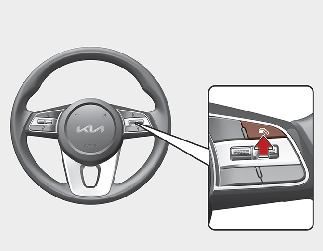
Press the Driving Assist button to turn on Smart Cruise Control. The speed will be set to the current speed on the cluster.
If there is no vehicle in front of you, the set speed will be maintained.
If there is a vehicle in front of you, the speed may decrease to maintain the distance to the vehicle ahead. If the vehicle ahead accelerates, your vehicle will travel at a steady cruising speed after accelerating to the set speed.
If your vehicle speed is between 0~30 km/h (0~20 mph) when you press the Driving Assist button, the set speed will be set to 30 km/h (20 mph).
Setting Vehicle Distance
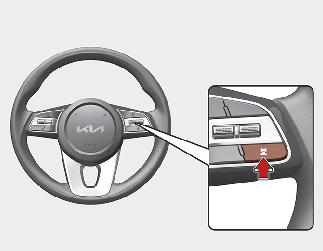
Each time the Vehicle Distance button is pressed, the Vehicle Distance changes as follows:

If you drive at 90 km/h (56 mph), the distance is maintained as follows:
Distance 4 - approximately 52.5 m (172 ft.)
Distance 3 - approximately 40 m (130 ft.)
Distance 2 - approximately 32.5 m (106 ft.)
Distance 1 - approximately 25 m (82 ft.)
The distance is set to the last set distance when the engine is restarted, or when Smart Cruise Control was temporarily cancelled.
Increasing set speed
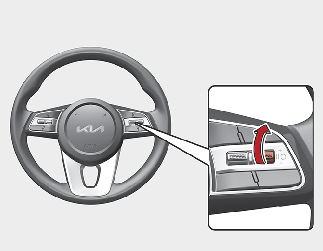
Push up the + switch, and release it immediately. The set speed will increase by 1 km/h (1 mph) each time the switch is operated in this manner.
Push up the + switch, and hold it whilst monitoring the set speed on the cluster. The set speed will increase by 10 km/h or 5 mph each time the switch is operated in this manner.
You can increase the set speed to 180km/h (112mph).
Check the driving condition before using the + switch. Driving speed may sharply increase when you push up and hold the + switch.

Decreasing set speed
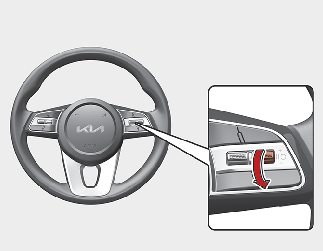
Push the (-) switch down and release it immediately. The set speed will decrease by 1 km/h (1 mph) each time the switch is operated in this manner.
Push the (-) switch down and hold it. The set speed will decrease by 10 km/h (5 mph) each time the switch is operated in this manner.
You can decrease the set speed to 30 km/h (20 mph).
Temporarily canceling Smart Cruise Control
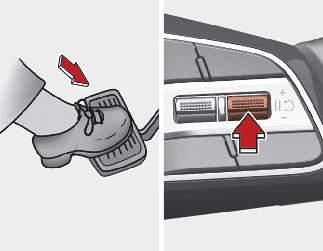
Resuming Smart Cruise Control
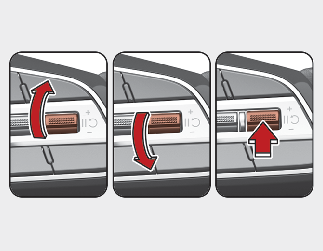
If you push the + switch up or - switch down, the set speed will be set to the current speed on the cluster.
Turning off Smart Cruise Control
Press the Driving Assist button to turn Smart Cruise Control off.
If your vehicle is equipped with Manual Speed Limit Assist, press and hold the Driving Assist button to turn off Smart Cruise Control. However Manual Speed Limit Assist will turn on.

Do not use the switches and buttons at the same time. Smart Cruise Control may not operate properly.
Displaying operating status
You can see the status of Smart Cruise Control operation in the Driving Assist view on the cluster. Refer to More Details .
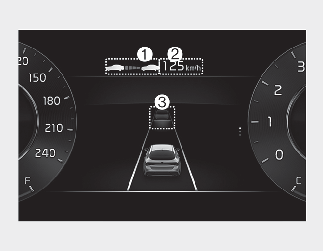
Smart Cruise Control will be displayed as below depending on the status of the function.
When operating
Whether there is a vehicle ahead and the selected distance level
Whether there is a vehicle ahead and the target vehicle distance
When temporarily cancelled
Vehicle (gray)
Previous set speed (gray)
Accelerating temporarily
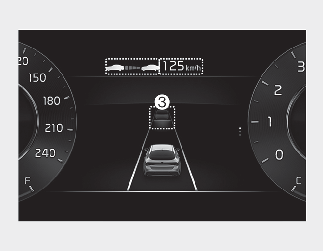
If you want to speed up temporarily without altering the set speed while Smart Cruise Control is operating, depress the accelerator pedal. While the accelerator pedal is depressed, the set speed, distance level and target distance will blink on the cluster.
However, if the accelerator pedal is depressed insufficiently, the vehicle may decelerate.
Be careful when accelerating temporarily, because the speed is not controlled automatically even if there is a vehicle in front of you.
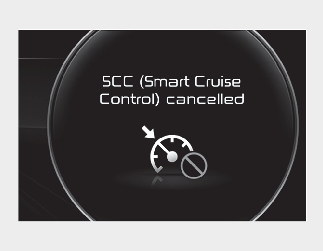
Smart Cruise Control will be temporarily canceled automatically when:
Your driving speed is above 190km/h (118mph)
The vehicle is stopped for a certain period of time
The accelerator pedal is continuously depressed for a certain period of time
The conditions for the Smart Cruise Control to operate is not satisfied
If Smart Cruise Control is temporarily canceled automatically, the warning message will appear on the cluster, and an audible warning will sound to warn the driver.
If Smart Cruise Control is temporarily cancelled whilst the vehicle is at a standstill with the function operating, EPB (Electronic Parking Brake) may be applied.
When Smart Cruise Control is temporarily cancelled, distance with the front vehicle will not be maintained. Always have your eyes on the road whilst driving, and if necessary, depress the brake pedal to reduce your driving speed in order to maintain a safe distance.
Smart Cruise Control conditions not satisfied

In traffic situation

Warning road conditions ahead
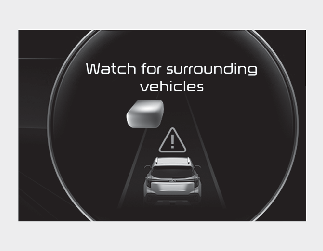
In the following situation, the warning message will appear on the cluster, and an audible warning will sound to warn the driver of road conditions ahead.
Always pay attention to vehicles or objects that may suddenly appear in front of you, and if necessary, depress the brake pedal to reduce your driving speed in order to maintain a safe distance.
Collision warning
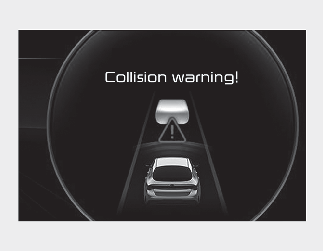
Whilst Smart Cruise Control is operating, when the collision risk with the vehicle ahead is high, the warning message will appear on the cluster, and an audible warning will sound to warn the driver. Always have your eyes on the road whilst driving, and if necessary, depress the brake pedal to reduce your driving speed in order to maintain a safe distance.
In the following situations, Smart Cruise Control may not warn the driver of a collision.
The distance from the front vehicle is near, or the vehicle speed of the other vehicle is faster or similar with your vehicle
The speed of the front vehicle is very slow or is at a standstill
The accelerator pedal is depressed right after Smart Cruise Control is turned on
Smart Cruise Control does not substitute for proper and safe driving. It is the responsibility of the driver to always check the speed and distance to the vehicle ahead.
Smart Cruise Control may not recognize unexpected and sudden situations or complex driving situations, so always pay attention to driving conditions and control your vehicle speed.
Keep Smart Cruise Control off when the function is not in use to avoid inadvertently setting a speed.
Do not open the door or leave the vehicle when Smart Cruise Control is operating, even if the vehicle is stopped.
Always be aware of the selected speed and vehicle distance.
When towing a trailer or another vehicle, Smart Cruise Control performance may decrease or your vehicle may operate at a high RPM or experience frequent gear changes, so always drive with care.
Keep a safe distance according to road conditions and vehicle speed. If the vehicle distance is too close during high-speed driving, a serious collision may result.
When maintaining distance with the vehicle ahead, if the front vehicle disappears, Smart Cruise Control may suddenly accelerate to the set speed. Always be aware of unexpected and sudden situations from occurring.
Vehicle speed may decrease on an upward slope and increase on a downward slope.
Always be aware of situations such as when a vehicle cuts in suddenly.
When you are towing a trailer or another vehicle, we recommend that Smart Cruise Control is turned off due to safety reasons.
Turn off Smart Cruise Control when your vehicle is being towed.
Smart Cruise Control may not operate properly if interfered with by strong electromagnetic waves.
Smart Cruise Control may not detect an obstacle in front and lead to a collision. Always look ahead cautiously to prevent unexpected and sudden situations from occurring.
Vehicles moving in front of you with a frequent lane change may cause a delay in Smart Cruise Control's reaction or may cause Smart Cruise Control to react to a vehicle actually in an adjacent lane. Always drive cautiously to prevent unexpected and sudden situations from occurring.
Always be aware of the surroundings and drive safely, even though a warning message does not appear or an audible warning does not sound.
If any other function’s warning message is displayed or warning sound is generated, Smart Cruise Control warning message may not be displayed and warning sound may not be generated.
You may not hear the warning sound of Forward Collision-Avoidance Assist if the surrounding is noisy.
The vehicle manufacturer is not responsible for any traffic violation or accidents caused by the driver.
Always set the vehicle speed under the speed limit in your state.
Smart Cruise Control may not operate in few seconds after the vehicle is started or the front view camera or front radar is initialized.
You may hear a sound when the brake is controlled by Smart Cruise Control.
Search New Inventory
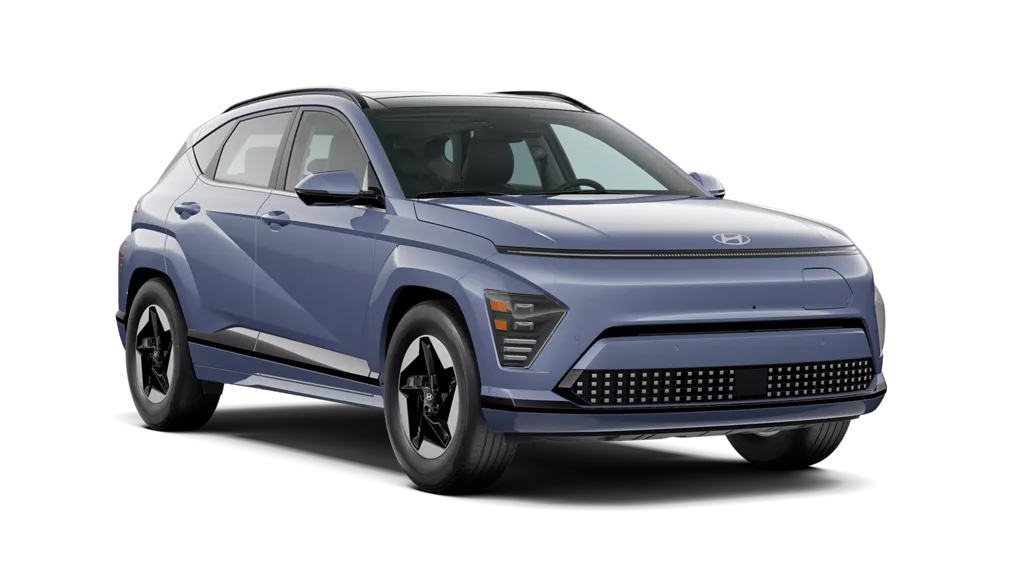
MSRP excludes freight charges, tax, title, and license fees. Freight charges and actual dealer prices may vary. Vehicles displayed may contain optional equipment at additional cost. Accessory items shown may vary according to model and illustration.
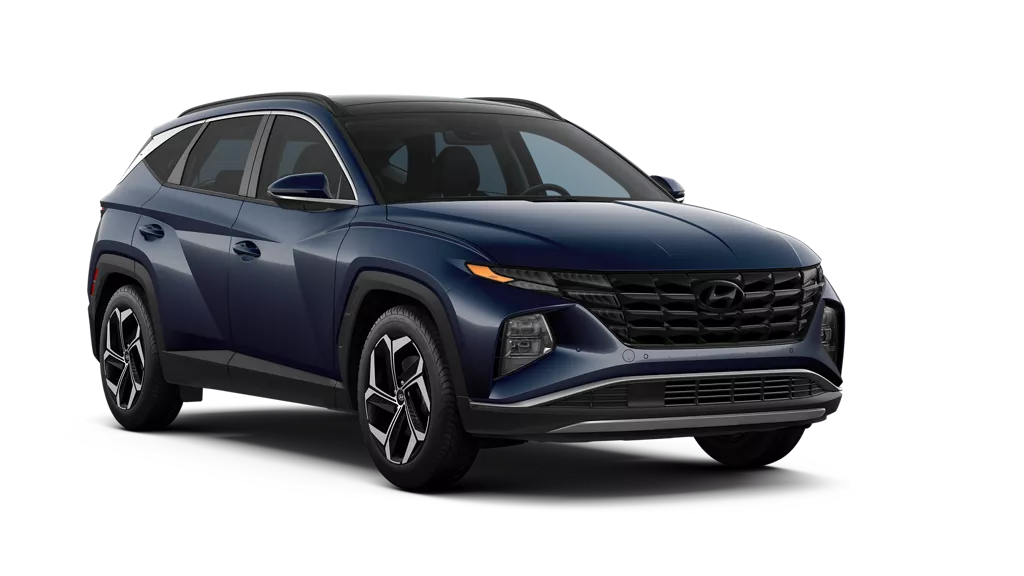
A whole new car buying experience designed to save you time and help make buying your new car as enjoyable as driving it.
Get in. Get out. Get back to your life. Enjoy fast oil changes and more to help maintain your Hyundai. Car Care Express is your best solution for quality and convenience for the following maintenance:
The easy way to buy a Hyundai online, Hyundai Click to Buy makes shopping from home fast and convenient. Using your smartphone, tablet or computer, it gives you the tools you need to get into your new Hyundai—whether you want to finance, lease or pay cash—plus a whole lot more.
- Shop from anywhere
- Trade in your vehicle online
- Take advantage of special offers
- Calculate your monthly payment
- Apply for credit
- Complete your paperwork online
- Transparent pricing
- Secure and convenient
- Have your Hyundai delivered to you
These Hyundai dealers are certified for IONIQ 5 and IONIQ 6 sales, as well as service and maintenance for these models.
NEXO Fuel Cell is available at these dealers. They’re also certified for NEXO Fuel Cell service and maintenance.
Hyundai SmartSense
Our network of advanced safety and convenience tech.

Confidence. Convenience. Cutting edge.

Making your drive safer.
Safety that always looks ahead, makes sure you’re not drifting, and checks your blind spot – even shows it to you onscreen. Several SmartSense features not only warn you of potential accidents, they step in when necessary to help keep you and your passengers safe.
Driving Safety

Forward Collision-Avoidance Assist with Pedestrian Detection (FCA-Ped)
The Forward Collision-Avoidance Assist with Pedestrian Detection (FCA-Ped) is intended to be a supplement to safe driving practices. The system is not designed to detect certain stationary objects such as trees or poles, and may not detect all vehicles or pedestrians under certain conditions. The system is a driver assistance system and is not a substitute for safe driving. The driver is responsible for being attentive and maintaining control of the vehicle, and should not wait for the system's alerts before braking as there may not be sufficient time to brake safely. See Owner’s Manual for further details and limitations.

Blind-Spot Collision-Avoidance Assist (BCA)
Blind-Spot Collision-Avoidance Assist (BCA) assists the driver by warning of other cars in the blind spot region. It senses the rear side territory of the vehicle when it is traveling over 20 mph. There are limitations to the function, range, detection and clarity of the system. It will not detect all vehicles or objects in the blind spot. Its operation depends on the size, distance, angle and relative speed difference between your car and other cars. BCA may not operate if sensors are obscured in any way. Do not rely exclusively on BCA. BCA is a supplemental system and the driver must still be attentive and exercise caution when driving. It is important to always signal, look over your shoulder and through your mirrors before changing lanes. It is the driver's responsibility to be aware of the surroundings and ensure it is clear before changing lanes or directions. See Owner’s Manual for further details and limitations.
Blind-Spot View Monitor (BVM)
Blind-Spot View Monitor (BVM) assists driver in changing lanes by providing a live view of the blind spots on either side of the vehicle and an audible alert if another vehicle is detected. Turn signal must be activated and other system limitations apply. Do not rely exclusively on BVM. It is the driver's responsibility to be aware of the surroundings and ensure it is clear before changing lanes or directions. See Owner's Manual for further details and limitations.
Lane Following Assist (LFA)
Lane Following Assist (LFA) helps keep the vehicle centered in its lane only when the lane markings are clearly visible on the road. Lane Following Assist will not work under all circumstances and will not prevent loss of control. Lane Following Assist is a supplemental assist, and does not replace the need for extreme care and attention by the driver. See Owner's Manual for feature details and limitations.
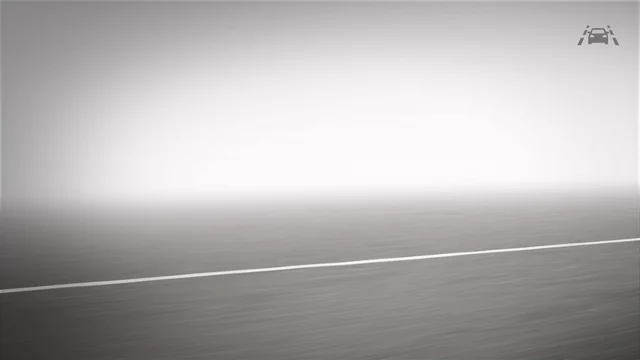
Lane Keeping Assist (LKA)
Lane Keeping Assist (LKA) will not work under all circumstances. It functions when it is able to detect painted lane markings. It cannot function if the lane markings cannot be seen clearly, if the lines are faded, or during dusk without headlights on, with snow, rain, sleet, dust, leaves or standing water on road, sudden changes in brightness such as shadows, tunnel exits/entrances, low sunlight angle causing reflections, multiple lane markings or criss-crossed lines, tar crack sealer and cracked or broken road surfaces. It also may not function on very rough roads, when walls, curbs or concrete barriers are close by, or if following another car too closely. Since it "sees" the lane markings using a camera in the upper windshield area, it is imperative this area be clear and free of blockage such as stickers, dirt, snow, tinting material, markings and labels. Avoid putting objects on the dashboard that may reflect light or images onto the system camera area. Lane Keeping Assist is not a substitute for safe driving practices, but is a supplemental assist only. The driver is responsible for always maintaining command and control of the vehicle and must keep hands on the wheel at all times. See Owner's Manual for further details and limitations.
Driver Attention Warning (DAW)
Driver Attention Warning (DAW) is only a warning to inform the driver of a potential lack of driver attention or drowsiness. It does not detect and provide an alert in every situation. It is the driver's responsibility to remain alert at all times. See Owner’s Manual for further details and limitations.
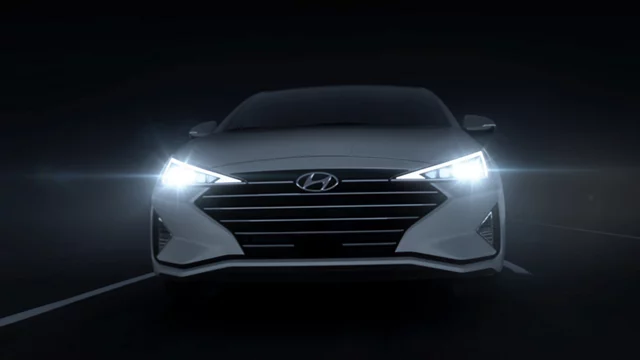
High Beam Assist (HBA)
Making your drive easier..
Convenience that helps make commutes and long drives more bearable by safely taking over the tedious parts of driving when you want them to.
Driving Convenience
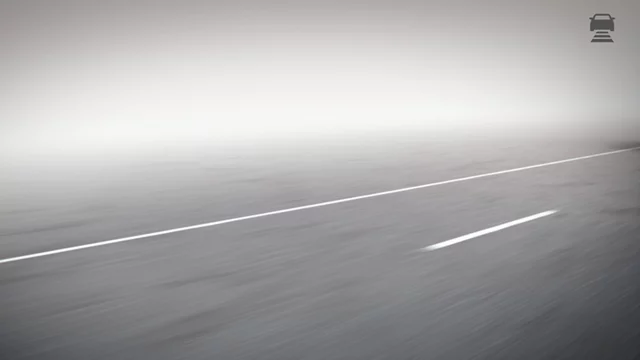
Smart Cruise Control (SCC) with Stop & Go
Smart Cruise Control (SCC) is not a collision avoidance or warning device. SCC is for highway use only and should not be used in poor weather, heavy or varying traffic, or on winding or slippery roads. Driver remains responsible to slow or stop the vehicle to avoid a collision. See Owner's Manual for further details and limitations.

Highway Driving Assist (HDA)
Highway Driving Assist (HDA), when used in conjunction with Lane Following Assist and Smart Cruise Control, is for highway use only and can help keep the vehicle centered in its lane while maintaining a safe distance from the vehicle ahead only when the lane markings are clearly visible on the road and should not be used in poor weather, heavy or varying traffic, or on winding or slippery roads. HDA will not work under all circumstances and will not prevent loss of control. Driver remains responsible to slow or stop the vehicle to avoid a collision. See Owner’s Manual for further details and limitations.
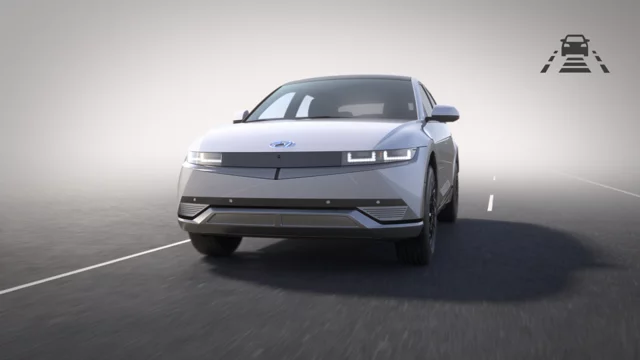
Highway Driving Assist II (HDA-II)
Highway Driving Assist II (HDA), when used in conjunction with Lane Following Assist, Lane Change Assist, Cut-in Assist, and Smart Cruise Control, is for highway use only and can help keep the vehicle centered in its lane while maintaining a safe distance from the vehicle ahead only when the lane markings are clearly visible on the road and should not be used in poor weather, heavy or varying traffic, or on winding or slippery roads. HDA will not work under all circumstances and will not prevent loss of control. Driver remains responsible to slow or stop the vehicle to avoid a collision. See Owner’s Manual for further details and limitations.
Downhill Braking Control (DBC)
Downhill Braking Control (DBC) is designed to help the driver maintain vehicle speed on steep, downhill descents and is not a substitute for safe driving. Vehicle speed, grade and surface conditions and other factors can affect the system’s capability. See Owner’s Manual for additional limitations and details.
Looking out – and even in – when you park.
Potential accidents can come from anywhere when you park. So, SmartSense parking-related sensors keep an eye out for you when you’re backing out or in. They also help keep your backseat passengers safe, whether they’re getting out onto a road or accidentally left inside.
Parking Safety
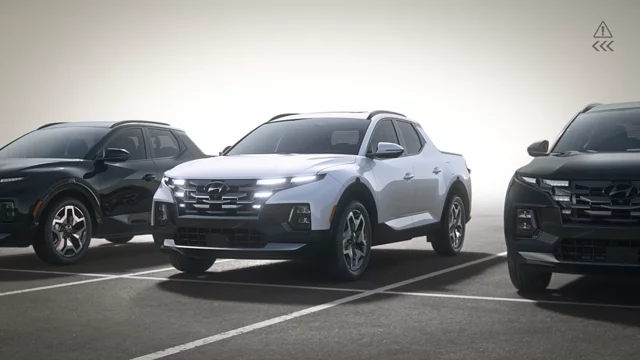
Rear Cross-Traffic Collision-Avoidance Assist (RCCA)
Rear Cross-Traffic Collision-Avoidance Assist (RCCA) can alert the driver of a potential hazard by providing an audible warning and applying light braking. RCCA is active when the vehicle is in reverse and operating at low speeds. Never rely exclusively on RCCA. RCCA cannot prevent all collisions and may not provide alerts or braking in all conditions. Always look over your shoulder and use your mirrors to confirm rear clearance. There are limitations to the function, detection, range and clarity of the system. See Owner's Manual for further details and limitations.
Advanced Rear Occupant Alert (Advanced ROA)
When the vehicle is parked and the engine has been turned off, the Advanced Rear Occupant Alert (AROA) can help to alert the driver if it detects movement from a child or pet. Upon exiting and locking the vehicle, the AROA may provide visual, audible, and/or Bluelink alerts if the interior overhead sensor detects movement. AROA is not a substitute for driver attentiveness. Never leave a child or pet unattended in a vehicle. Bluelink notification requires a Bluelink-equipped vehicle with an active Bluelink account. See Owner's Manual for further details and limitations.
Rear Occupant Alert (ROA)
When the vehicle is parked and the engine has been turned off, the Rear Occupant Alert can help to alert the driver if the rear door(s) have been opened at any point after the vehicle was unlocked at the beginning of the journey. Upon turning the engine off, Rear Occupant Alert will provide a visual alert on the instrument cluster. Rear Occupant Alert is not a substitute for driver attentiveness. Never leave a child unattended in a vehicle. See Owner's Manual for further details and limitations.
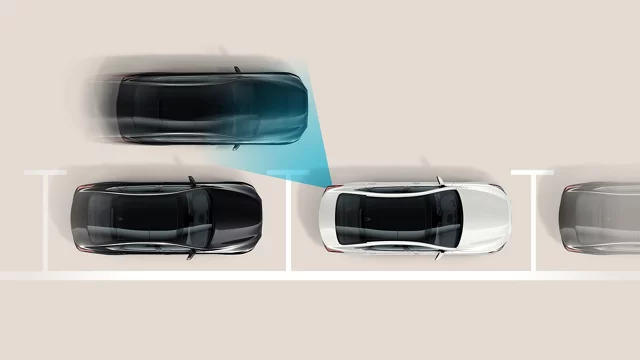
Safe Exit Assist (SEA)
When the vehicle is parked, Safe Exit Assist (SEA) can alert occupants planning to exit the vehicle when a vehicle is approaching from behind. When Child Locks are active, SEA helps prevent the rear doors from opening if a vehicle approaching from behind is detected. SEA is not a substitute for driver or passenger attentiveness. Always be aware of your surroundings and attentive of approaching vehicles. See Owner's Manual for further details and limitations.
Safe Exit Warning (SEW)
When the vehicle is parked, Safe Exit Warning (SEW) can alert the driver when a vehicle is approaching from behind. SEW does not work in all situations and is not a substitute for driver or passenger attentiveness. Always be aware of your surroundings and attentive of approaching vehicles. See Owner's Manual for further details and limitations.
Helping you hate parking a little less.
These features help you deal with the hassles of parking, from tight spaces to crowded lots. Our SmartSense cameras and sensors help make it less stressful - whether it’s giving you a better view around you, warning you of an approaching car, or even parking your Hyundai for you.
Parking Convenience
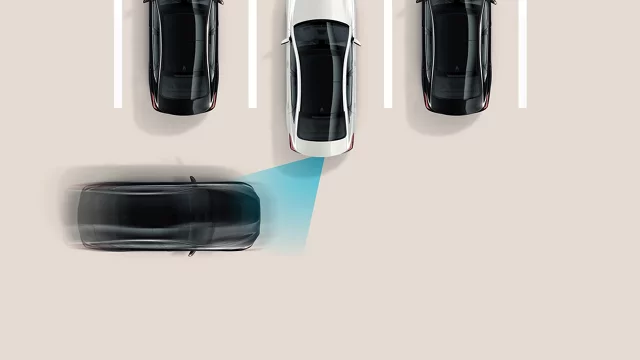
Reverse Parking Collision-Avoidance Assist (PCA-R)
Parking Collision-Avoidance Assist – Reverse (PCA-R) can alert the driver of a potential hazard while reversing by providing an audible warning and/or applying braking. PCA-R is active when the vehicle is in reverse and operating at low speeds. Never rely exclusively on PCA-R. PCA-R cannot prevent all collisions and may not provide alerts or braking in all conditions. Always look over your shoulder and use your mirrors to confirm rear clearance. See Owner's Manual for feature details and limitations.
Surround View Monitor (SVM)
Surround View Monitor (SVM) is a parking support system. SVM cannot completely eliminate blind spots, may not detect every object and does not warn of moving objects. Always check surroundings before moving vehicle. See Owner's Manual for further details and limitations.
Premium Remote Smart Parking Assist (RSPA)
Remote Smart Parking Assist (RSPA) can remotely help park the vehicle. However, several factors can impact RSPA performance. RSPA may not function correctly if one or more of the parking sensors is damaged, dirty or covered or if weather conditions (heavy rain, snow or fog) interfere with sensor operation. Always inspect the parking area with your own eyes. See Owner's Manual for further details and limitations.
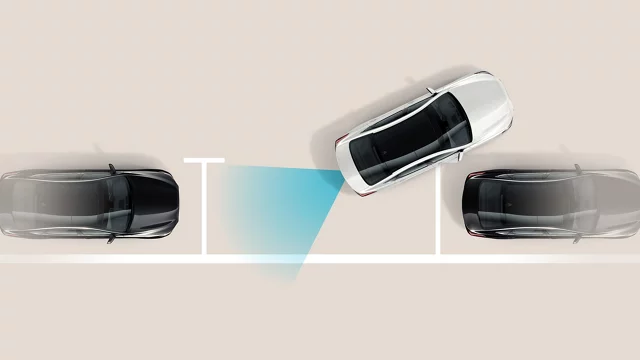
Remote Smart Parking Assist (RSPA)
Parking distance warning – front and reverse .
Do not rely exclusively on Parking Distance Warning. Parking Distance Warning is a supplemental system and the driver must still be attentive and exercise caution when parking. See Owner's Manual for further details and limitations.
Hyundai Safety Awards
2022 nhtsa 5-star overall safety ratings.
Eight 2022 Hyundai models have received 5 out of 5 stars for overall safety in the NHTSA 5-Star Overall Safety Ratings program – KONA, PALISADE, SONATA, SONATA Hybrid, ELANTRA, ELANTRA Hybrid, SANTA FE and SANTA FE Hybrid.
An industry leader in initial quality according to J.D. Power.
Hyundai is among the Top 3 Brands in the J.D. Power 2019 U.S. Initial Quality Study (2 Years in a Row).
Government 5-Star Safety Ratings are part of the National Highway Traffic Safety Administration's (NHTSA's) New Car Assessment Program ( www.nhtsa.gov ).
Hyundai is among the Top 3 Brands in the J.D. Power 2019 U.S. Initial Quality Study of new vehicle owners’ experience with their own vehicle after 90 days of ownership. Visit jdpower.com/awards .
SmartSense is on your next Hyundai.
Use the filter to see which models have the SmartSense features you’re looking for.
*Feature(s) will become gray and inactive if it’s not available with your selected feature.
Filter by Safety Feature
**Features in gray are not available when combined with other features.
{{filterCategory.category}}
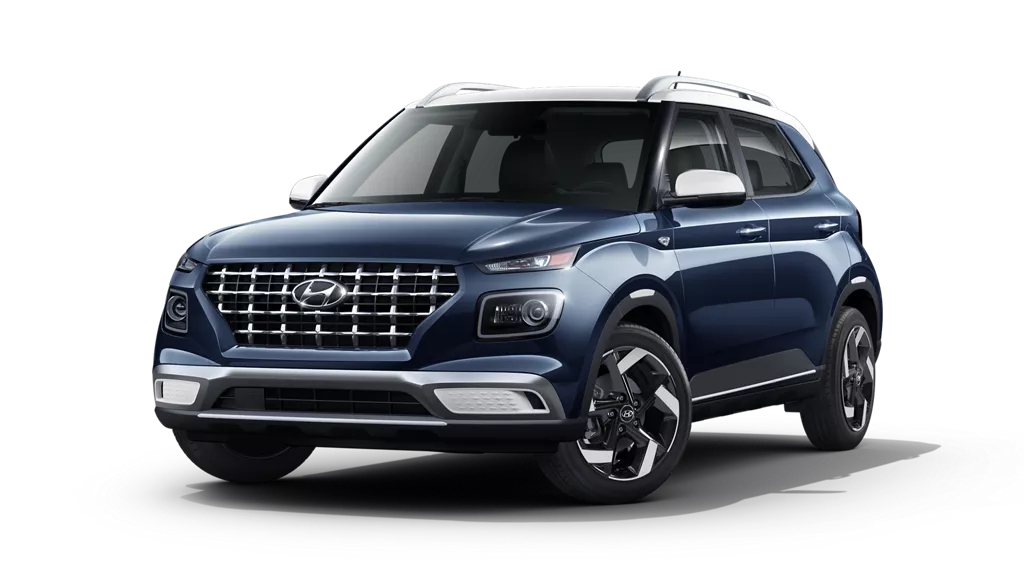
Urban Compact SUV
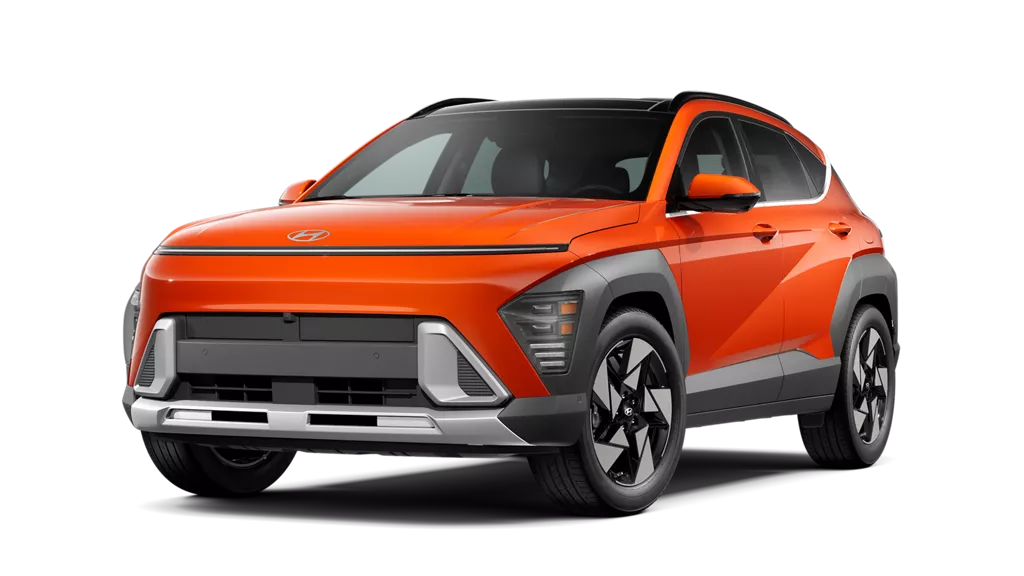
Electric SUV
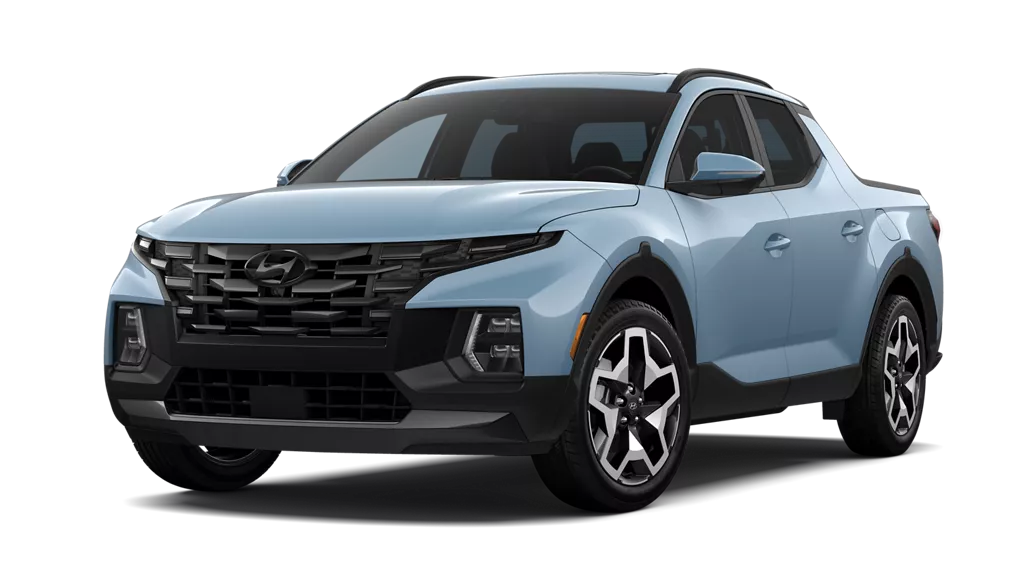
Sport Adventure Vehicle
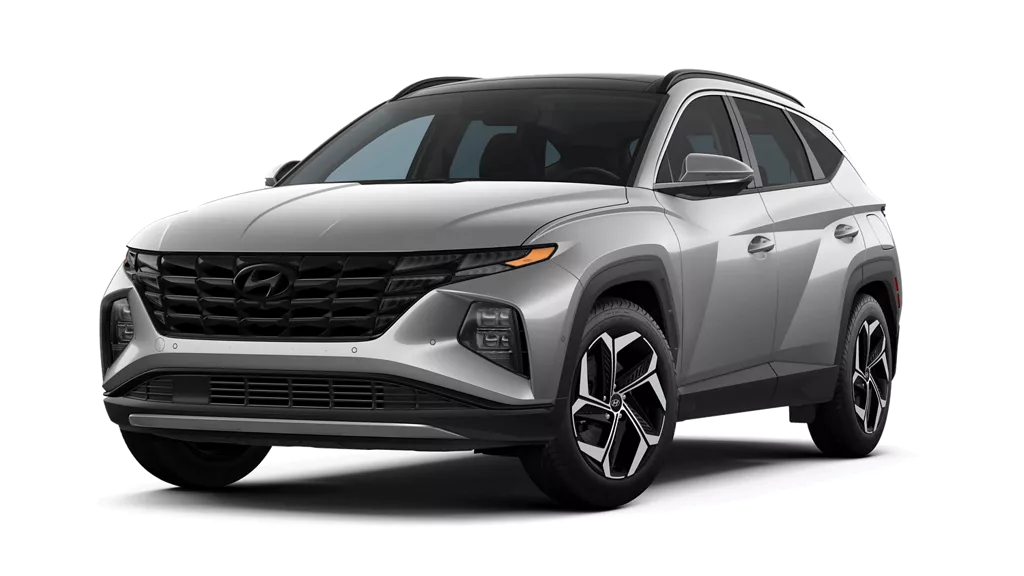
Modern Compact SUV
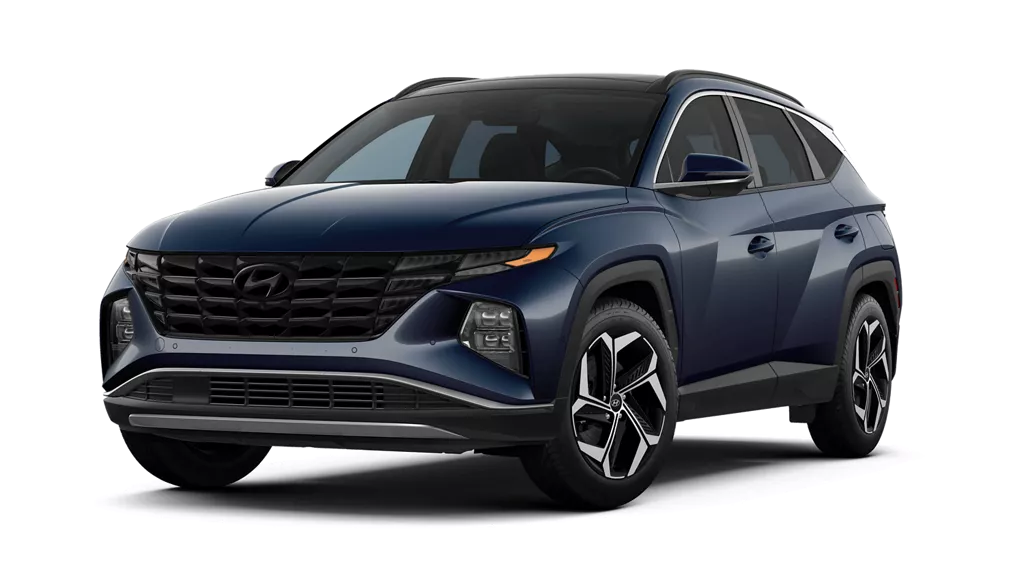
Compact Plug-in Hybrid SUV
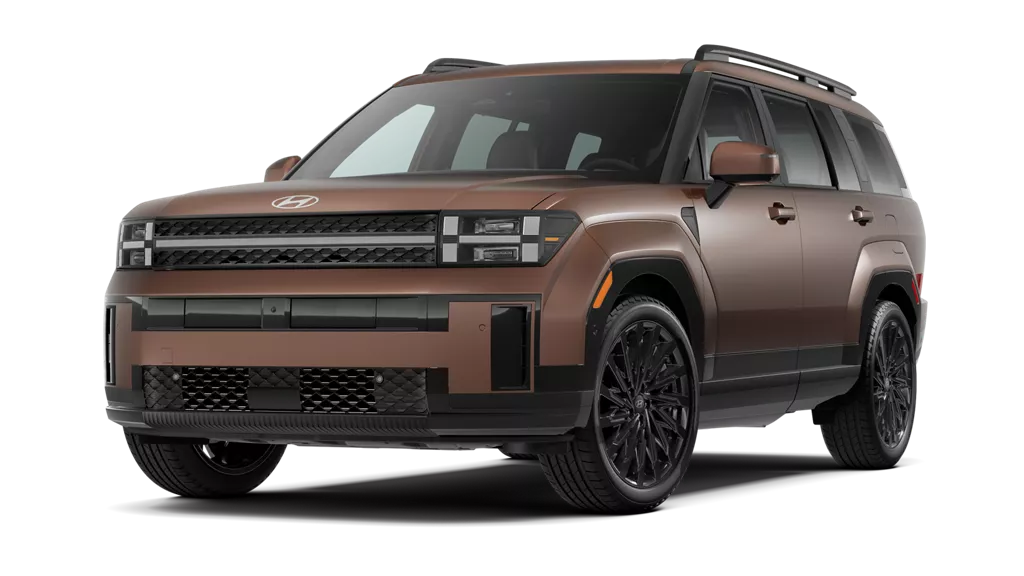
6-7 Passenger SUV
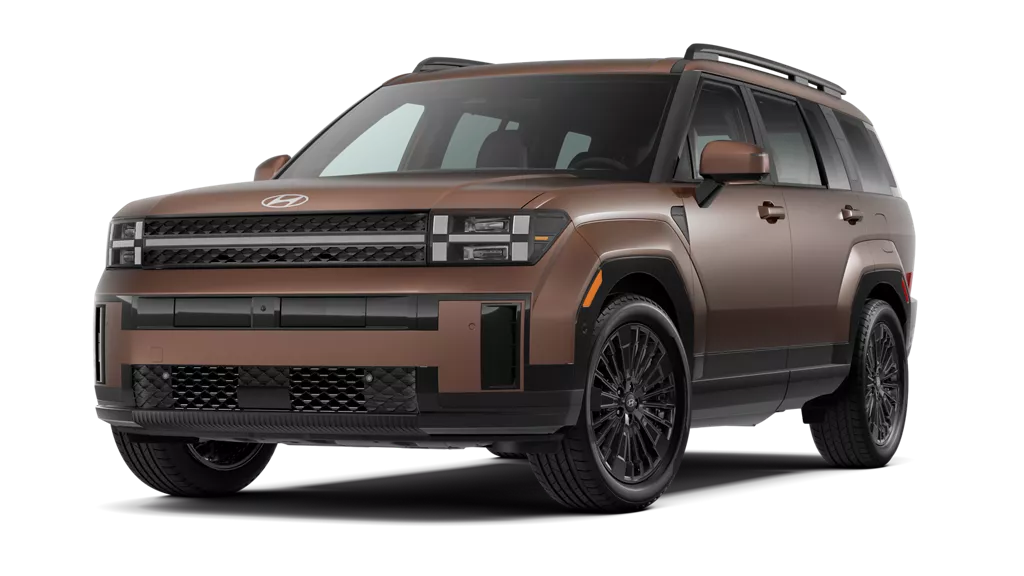
5-passenger Plug-in Hybrid SUV
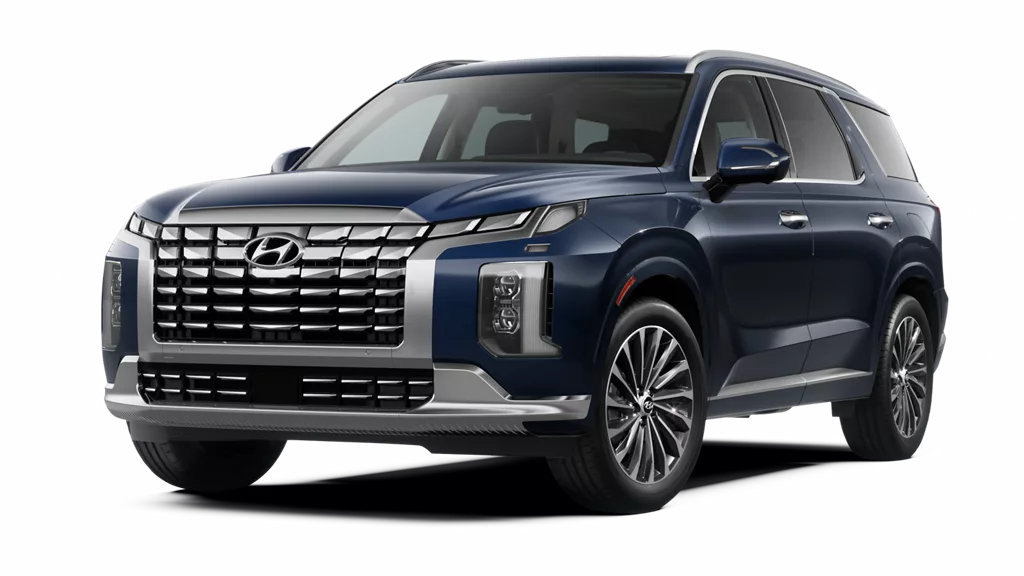
8-passenger SUV
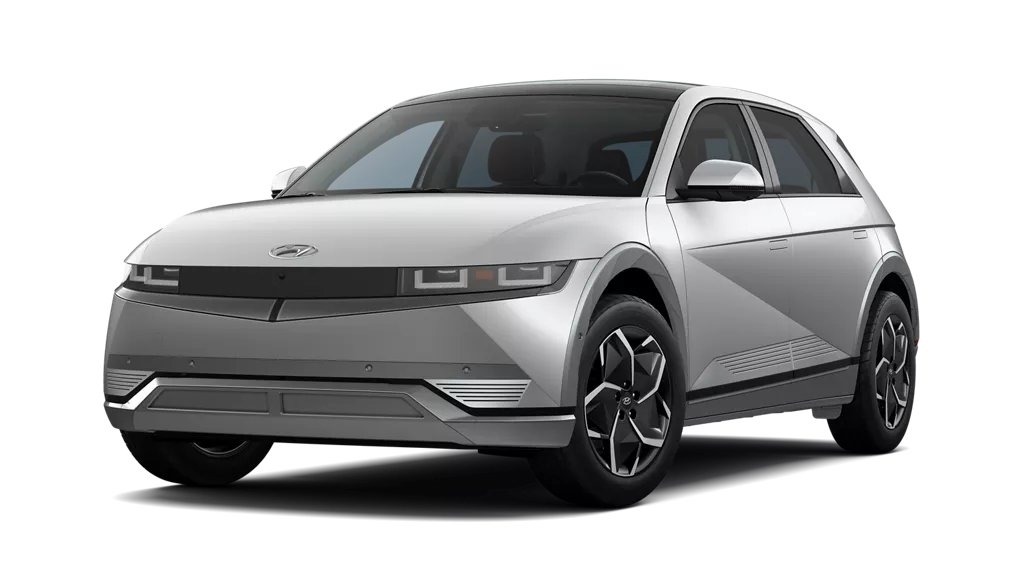
Hydrogen Fuel-cell SUV
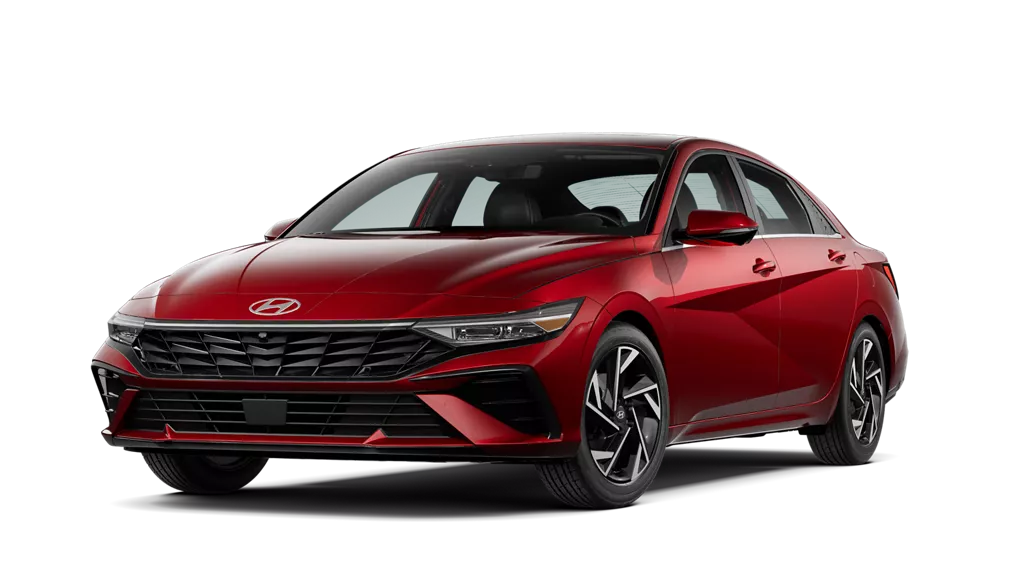
Compact Sedan
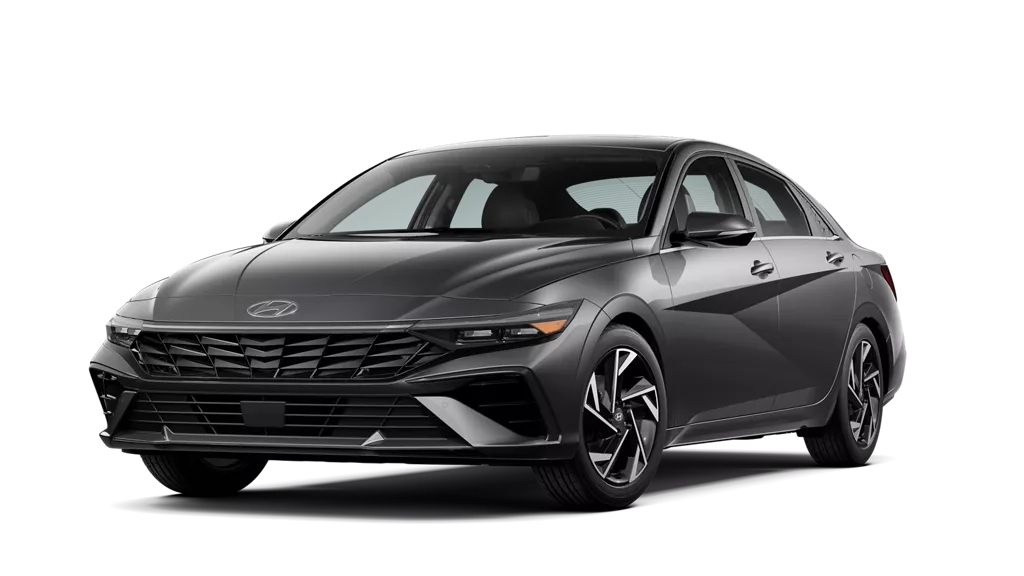
Compact Hybrid Sedan
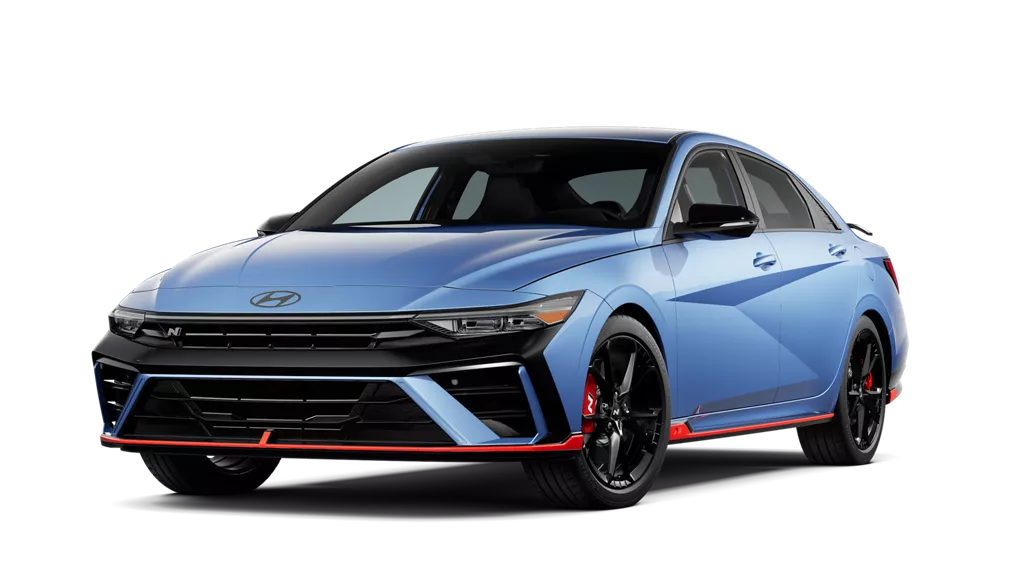
High-performance Sedan
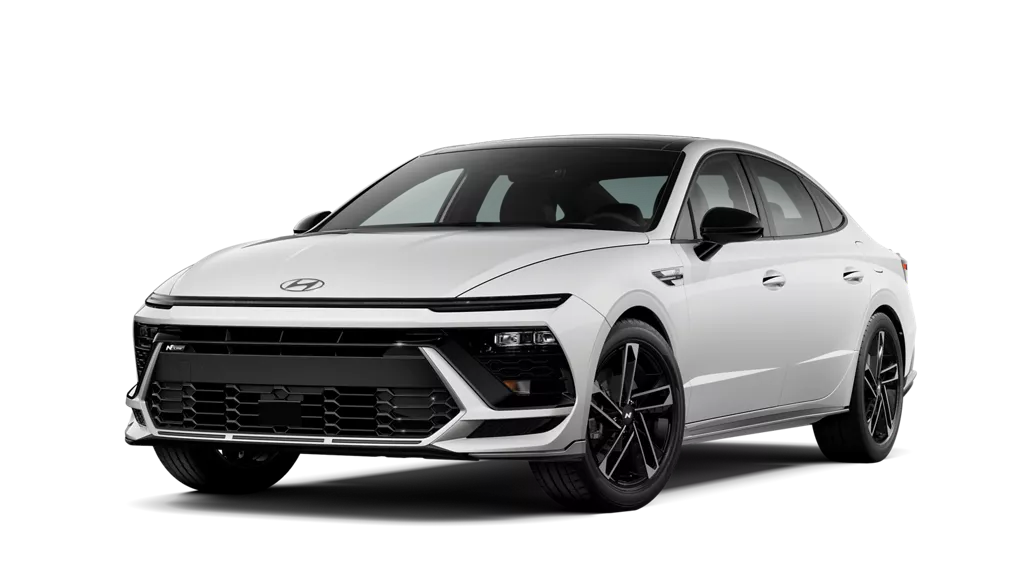
Gas & Hybrid
Starting MSRP for 2024 SONATA Gas SEL FWD: $27,500; 2024 SONATA Gas SEL AWD: $29,000; 2024 SONATA Gas N Line: $34,950; 2024 SONATA Hybrid SEL: $30,800; 2024 SONATA Hybrid Limited: $37,200.
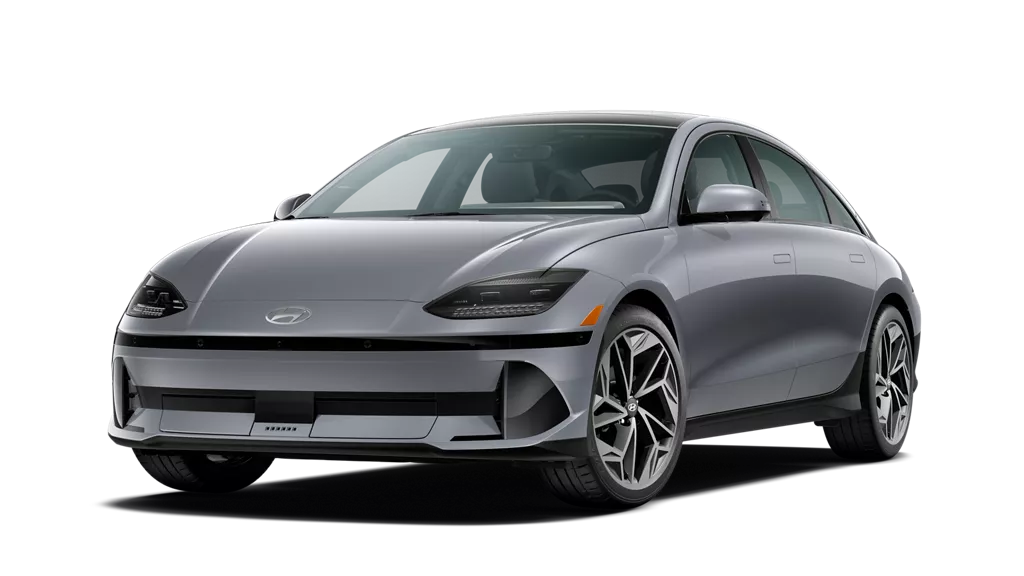
Electric Sedan
0 && activeModelsCount == 0" class="st-no-vehicles-match">There are no models or trims that match your filter selection.
Confirm your zip code.
Please enter a valid ZIP code.
Please enter a ZIP Code for offers, inventory, and dealers near you.
Your location could not be detected. Please enter a ZIP Code.
Please enter a valid ZIP Code.

- Forum Listing
- Marketplace
- Advanced Search
- 2017-2022 Kia Niro Forum
- 17-22 Kia Niro Issues, Problems, Defects & Recalls
- Kia Niro Issues, Problems And Complaints
- Welcome to the Kia Niro forum! We discuss all models of the Niro, including the Hybrid, PHEV and EV versions. We are glad you stopped by. Feel free to browse the various topics, along with out FAQs. To enable posting, you need to register for a user account. There is no cost for this. Just click in the upper right corner where it says Login/Join. We look forward to your continued parcipitation.
Warning about "Smart" cruise control
- Add to quote
All, I have used my smart cruise control alot on the highway, and in most circumstances its worked fine. On one instance however, it did create a situation that could be considered dangerous, so I thought I would share so you can keep an eye out for it also. On a recent road trip I came across 2 tractor trailers engaged in a slow pass. My cruise was set for about 75, and the trucks were travelling about 60 - 65 MPH. I pulled up behind the truck in the left hand lane and the Niro maintained the distance I set (the max). A driver behind me, obviously frustrated with the whole situation passed me on the inside, and swung into my lane ahead of me. Normally this is not a big deal. With the SCC however, it did create a situation I was not prepared for. When the car pulled in my lane, it replaced the radar image of the truck as the "car in front". Since it was still going faster than me when it entered my lane the software detected it as "moving away" and immediately attempted to accelerate my car back up to the set speed. This basically scared the bejesus out of me for a second as I accelerated towards the car and truck, and then when that car slowed, immediately slowed. I think the software should be upgraded for this condition so it only begins acceleration after a minimum distance has been achieved. I am not sure how to share this with Kia, if anyone has any suggestions, that would be great.
Good that you were aware of the scene around you and took control without incident. Go the the KIA website and scroll to bottom of page for "contact kia". Send them off your post and call them a few days later to insure they are aware of this safety issue.
Sent them a message describing the issue. We'll see where it goes.
My issue with smart cruise I had similar except my issue was when a truck was exiting the highway and I was in the inside lane behind it. It slow my car down to 30 mph even though the truck had move clearly out of the lane and onto the off ramp. Car behind me going the 75 mph speed limit almost rear ended me. I now just turn it off if some one is exiting in front of me then engage it once clear.
TimbodieTx said: My issue with smart cruise I had similar except my issue was when a truck was exiting the highway and I was in the inside lane behind it. It slow my car down to 30 mph even though the truck had move clearly out of the lane and onto the off ramp. Car behind me going the 75 mph speed limit almost rear ended me. I now just turn it off if some one is exiting in front of me then engage it once clear. Click to expand...
Just drove home in my new Niro. Smart cruise control worked beautifully. However, I knew I prior to purchase that I was going to hate it and I did. Just as I'm getting ready to switch lanes because of a slow car in my lane, the Niro slows down. I want regular cruise control but I did not find a setting. I know there is a setting on the Ioniq. Anyone know if regular cruise control is possible in a Niro equipped with smart cruise control?
I'm sure the Ionic is the same. Is it possible that you didn't signal? The turn signal seems to change the character of the smart cruise. It closes on the car in front as if it is going to pass. A normal lane change and pass works well. If you don't signal, when the car in front switches lanes and exposes the slower traffic, the cruise/autonomous brakes will...... Well, you have to hope following traffic is well separated and alert.
“Smart Cruise Control or Cruise Control” The driver may choose to only use the cruise control mode (speed control function) by doing as follows: 1. Turn the smart cruise control system on (the cruise indicator light will be on but the system will not be activated). 2. Push the distance to distance switch for more than 2 seconds. 3. Choose between "smart cruise control (SCC) mode" and "Cruise control (CC) mode". Click to expand...
Very good to know, thanks! I wonder how many other hidden selections are available that I don't know about?
I've noticed this several times, but I didn't understand what was happening. Your explanation seems correct. I noticed the problem when a car traveling faster than I was changed lanes from one side of me to the other, between me and the car in front on which my sensors were locked. I experienced the same unexpected acceleration you did, which was a problem, as none of the cars ahead was traveling as fast as the guy who cut across my lane. Definitely not you and apparently a bug, not a feature
Smart cruise control sucks. Standard CC has none of those issues.
Standard cruise control sucks. Smart cruise control can slow down when the guy in front of you slows down. Even if he jams on the brakes. I won't even use CC in standard mode anymore, ever since I bought a Jeep last year with adaptive cruise, it's a make-or- brake (get it ha hah) feature on any car I buy going forward. Generally that accelleration "issue" on ACC systems is rare, because you have to be on a 3+ lane highway, and be in the middle lane, for it to even happen. And the system will pick up that the car cutting through is gone within a couple of seconds and slow you back down to be in formation with the car that's in front of you again anyway. Assuming the car is going fast enough to cause that: if he's going your same speed or slower then it'll cause your car to slow down to open the same gap up again. Remember, with regular CC you would either never be in that situation, because the cars in front of you are going too slowly anyway, or it wouldn't react to the car cutting in front of you at all, and you'd have to get your foot on the brake to avoid an accident.
I disagree. It’s not perfect... maybe not even close but it certainly does not suck. It is an improvement over standard CC.
I agree that smart cruise control doesn't suck, but that changing lanes in front of me bug seems like it would have an easy fix in software. You lurking, Kia?
Every single time I try ACC, I get unwanted braking. ACC is certainly useful in a major city setting like LA where you may prefer less attentiveness, but the features are a bug to me. Lots of people report lower mpg on ACC, not realizing that varying speeds of cars ahead of them is the direct cause. I prefer to go around slowing traffic to maintain speed, but that often requires coming close to cars in front before pulling into the other lane. ACC brakes under those conditions exactly as you are pulling into the fast lane, potentially causing an accident merging too slowly into fast traffic. For situations where passing is not desired (two lane roads perhaps), I can look at traffic a mile ahead and make small adjustments to set speed so I'm not varying speed because of first car ahead. You can do that on ACC as well, but there is no benefit from ACC in that situation either. On two lane roads, no issue right? Wrong! Turning cars that will be out of the road before I reach them also cause unneeded braking. Regen, but still. Yup, I hate ACC. For cause. AEB is still fully functional should my attention waver.
yticolev said: Every single time I try ACC, I get unwanted braking. Click to expand...
yticolev said: but the features are a bug to me. Click to expand...
yticolev said: I prefer to go around slowing traffic to maintain speed Click to expand...
yticolev said: that often requires coming close to cars in front before pulling into the other lane. ACC brakes under those conditions exactly as you are pulling into the fast lane Click to expand...
yticolev said: For situations where passing is not desired (two lane roads perhaps), I can look at traffic a mile ahead and make small adjustments to set speed Click to expand...
yticolev said: Turning cars that will be out of the road before I reach them also cause unneeded braking. Regen, but still. Click to expand...
To adjust the sensitivity of smart cruise control The sensitivity of vehicle speed when following the front vehicle to maintain the set distance can be adjusted. Go to the User Settings Mode and select the Driving Assist and select SCC (smart cruise control) and select the Response. You may select one of the three stages you prefer. • Slow: Vehicle speed following the front vehicle to maintain the set distance is slower than normal speed. • Normal: Vehicle speed following the front vehicle to maintain the set distance is normal • Fast: Vehicle speed following the front vehicle to maintain the set distance is faster than normal speed. Click to expand...
Hybrids work best in varied speed situations, not constant ones. You need opportunities to charge and discharge the battery to get max MPGs in a hybrid. You trying to maintain constant speed is probably hurting your MPGs. Most people in normal cars get lower MPGs when using cruise control systems, but hybrids are a different animal entirely. If you're waiting to get that close to slowing traffic before moving over to pass I'm sorry, but you're the one driving dangerously, and it's your own fault that you're having problems. You're essentially weaving through traffic. Sorry, but from what you're describing, every single time you use ACC you're comitting driver error .
I'm not getting that close to slowing traffic, that is the scenario where I will back off the set speed. I'm merging into an open space in the fast lane without causing them to slow (which hurts their mpg). Sometimes that is safest done within three car lengths to the steady speed car/truck in front of me. That is close enough to trigger the ACC braking just as I switch lanes. I would never do this if the car in front was tailgating and have been doing this (without CC) for some 45 years without the slightest hint of promoting an accident. But the ACC will promote an accident in this otherwise safe scenario, as well as several other scenarios described in this thread. Besides the unintended braking issues, ACC will get lower mpg in traffic versus manual or standard CC closely and intelligently managed. Yes, slowing and speeding up is where hybrids do do better than non-hybrids, so yes, when ACC is in both types of cars, the hybrid does better. Yes, at steady state speeds, it is mostly about the efficiency of the ICE, and aerodynamics. But that is a lot of the driving that we do (or should be doing on the highway), and preserving momentum is key to best mileage. So that is two straw arguments you have thrown in. One that I'm a bad driver, and the other is that I shouldn't be driving at a steady speed. One is just insulting, and the other one is contrary to physics.
Under SCC, my PHEV will close and then match the speed of the car ahead. If I then signal left turn, the car will accelerate black to the preset speed (usually the speed limit) as I move left to pass. Very smooth. I really like the way it works. Maintaining momentum is not nearly so important with a hybrid since regenerative braking recovers >90% of the energy. Benefit: I can break going into a turn without trying to maintain momentum - safer. Edit. Previous post mentioned same SCC behavior.
If you're not getting "that close" to slowing traffic, then you shouldn't be braking before you move over. Three car lengths isn't that far at all, haven't you heard of the two second rule? Just because you find something insulting doesn't mean it isn't also correct. And apparently you need a physics refresher anyway (the classes have changed from 45 years ago you know). And no, preserving momentum is not the key to the best mileage on a hybrid. Quite the contrary, preserving momentum doesn't allow a hybrid to maximize the use of its energy recapture systems (that's why they get a lower MPG rating in the EPA's "highway" test.). The key is to make maximum use of motive forces, including grades and coasting opportunities that allow you to generate new energy to expend somewhere else. That's not the normal "set speed and go" highway driving. But you get better MPGs that way.
Sure, hypermiling on freeway traffic? That is reckless driving. It certainly is unfortunate that physics classes have changed in the last 45 years because the fundamentals of physics have not. Preserving momentum is key to efficiency in all vehicles. Sure, adding hills changes the equation, but slowing and speeding up are techniques best used on empty roads. I've used them myself on occasion, but that is not "normal" and you will be reducing not only the efficiency of other vehicles on the road, but endangering their lives. Again, arguments without scientific basis. Hybrids don't get lower EPA ratings on highways because they are hybrids. On flat roads at steady speeds (like EPA rankings), hybrids have no advantage at all over standard cars from a physics standpoint. In fact, many of them do exceed highway mileage of other cars because they have a smaller, more efficient engines, not because they are hybrids. Same engine in the same body with no battery will actually get better mileage because of the reduced weight.
You forgot to add "get off my lawn." Jeez are you really like that in real life. Hypermiling on the freeway is "dangerous" but getting within a second overtake gap of the guy in front of you is perfectly OK? You have issues. As proven by you contradicting yourself above. But you're boring me, so I'll probably just block you instead of trying to teach you basic logic and science.
Put me in the "smart cruise control sucks" camp. YOU should be responsible for your car...100% of the time.
Just a quick update. I reported this to Kia, and received a letter apologizing for the inconvenience, and a $50 gift card.
Kid, I was a physics major. But go ahead, learn me about the new fangled physics they've invented in the last 45 years. Let's cut out the ad hominem attacks, OK? I won't make fun of your physics if you stop being insulting.
Do you realize you're calling a 45 year old systems engineer a "kid?" And you think I'm being insulting. Get lost.
I'll believe figures on the close order of 50% energy recapture and deployment. Of course that is far less than the 100% of energy preservation from driving habits that minimize slowing down and speeding up. That includes never using "smart" cruise control. That is a luxury item, not an efficiency benefit, that allows drivers on crowded roads to be less attentive, arriving less fatigued. Yup, using them on hybrids is more efficient than on ICE only cars. So?
So,,,, I can opt to be safer/relaxed and the efficiency penalty is smaller (zero). In my case, SCC does not regen brake when slowing to match the slower car directly in front it just coasts allowing already existing vehicle motion friction to slow the car. Thus no regen loses are incurred. Thus SCC and my driving style is no less efficient than a strict momentum maintenance style without SCC. It is a little slower. Regarding braking into a turn..... My experience is that a car slows noticeably if I coast through a turn trying to preserve momentum. I assume this is due to energy dissipated in the tires, increased tire wear and heat. My assumption is that regen braking before the turn will save some (60%?) of this lost energy. Thoughts?
Can't argue with lower speed improving mpg. However there will be a significant difference between a lower average speed that has more variability and the same average with lower variability. Changing the argument to include wind resistance doesn't change facts.
yticolev said: Can't argue with lower speed improving mpg. However there will be a significant difference between a lower average speed that has more variability and the same average with lower variability. Changing the argument to include wind resistance doesn't change facts. Click to expand...
- If you push something hard enough, it will fall over — Fudd's First Law of Opposition.
- Teslacle's Deviant to Fudd's Law: Half of what goes in here must come out there.
The one basic hypermiling precept that seems to be missing here is internal combustion efficiency. IC engines are considerably more efficient at high manifold pressures and relatively low RPM. That is why hypermiling tetniques often involve pulsing speed. Pure EV and pulsing is a net minus due to efficiency losses in regeneration and aceleration. I suspect Niro would be very close pulsing or not.
No advantage to pulse and glide in an EV on the flat. Pulse and glide up hills and recover on the far side, big gains potentially. One big difference between EVs and ICE is that EVs are most efficient at speeds under 20 mph. ICE optimal speed is around 37, a balance between thermal efficiency and aerodynamics. I'm talking about energy efficiency, not time efficiency of course. Few are going to tool around at those speeds, nor would it be legal on many roads.
I have noticed the OP's situation. It is logical and not surprising if you are ready fir it. I really like the system. Last night, however, the freezing spray disabled the radar and thus the adaptive cruise. Somehow for a time I was able to engage normal cruise. I have no idea how and I couldn't always duplicate it. Does anyone know how to get normal cruise with a radar failure? I assumed it was just hit the distance button a number of times or hold it down more than 2 sec. Incidentally, there was plenty of warning that both emergency braking and adaptive cruise had failed. Regeneration braking is still a mystery to me. Specifically, how do I know where friction starts? Do the brake lights come on prior to friction braking if braking is used with adaptive cruise and my foot off the pedal? I really want to get a feel for slowing with max regeneration and not be dragging the brakes to a stop. I would assume that max regeneration deceleration (what a mouthful) could be close to max acceleration in EV only acceleration....ie about 60hp or 40 in the non plug in.... but I just don't know and the car won't tell me.
The owner's manual documents a technique for reverting to standard cruise control. If you've signed up with owners.kia.com, you can access it from this page: https://owners.kia.com/us/en/reference-material.html?page=manuals . For the USA PHEV manual, the information is on approximately page 6-60. But as I reacquainted myself with this section of the manual, it pointed out several limitations, including the fact that if you're driving in slippery conditions, you really shouldn't have any form of cruise control enabled. The manual also points out several limitations that are aspects of the OP's concerns. The disclaimers and limitations appear between pages 6-52 and 6-64. Some are highlighted in yellow, many are not highlighted. One of the ones that kind of caught my attention is that you shouldn't rely on it to work correctly if the vehicle in front of you happens to be a motorcycle, another was that you shouldn't rely on it if the vehicle in front of you is stopped. But there were several others, and I recommend reading this section of the manual, even if you read it once before.
Thanks. I'm quite remiss in reading the owner's manual. Trying to do it on the phone on an '18 download is not optimum to say the least. I like the adaptive cruise more every time I use it. Except for a few rentals, it's my first. At first I didn't like that cruise control doesn't "take the throttle" like most but I'm slowly getting used to that.
You are the driver, you have to decide and you have to take care ...
- ?
- 10.5K members
Top Contributors this Month

IMAGES
VIDEO
COMMENTS
The Hyundai dashboard displays the message "Check Smart Cruise Control System" when one of the two systems that depend on the front-end radar sensor for the operation has electrical problems. A problem with your ABS hydraulic module could also cause it. If you recently experienced a dead battery, drove through a car wash, or were involved ...
66 posts · Joined 2018. #1 · Jul 31, 2018. Yesterday I was driving along in my 2018 HEV minding my own business and braked on the approach to a roundabout when my car decided to start complaining frantically "Check AEB system" and "check smart cruise control system" then saying that smart cruise control was disabled (it was on, but not active ...
A: Check Smart Cruise Control System. When Smart Cruise Control is not working properly, a warning message will appear, and the warning light will illuminate on the cluster. Have Smart Cruise Control be inspected by a professional workshop. Kia recommends visiting an authorized Kia dealer/service partner.
Model shown in video is for demonstration purposes only. Availability and functionality on your vehicle may vary.Want to know how to use Smart Cruise Control...
This video highlights how the system can make driving in traffic easier by automatically adjusting your set cruising speed to keep pace with stop-and-go traffic patterns. You'll also learn how to switch between Smart Cruise Control and standard cruise control.
The Smart Cruise Control system on your Hyundai may help reduce fatigue during your trip by helping to maintain the desired speed and the minimum set distanc...
The available Navigation-Based Smart Cruise Control on your Hyundai can help automatically adjust vehicle speed when driving on highways. This video will explain how the system works as well as the different settings and limitations of the system.
The Smart Cruise Control system on your Hyundai may help reduce fatigue during your trip by helping to maintain the desired speed and the minimum set distance between yourself and the vehicle ahead. Watch this video to learn how to operate the system and the different settings found in it. Model shown in video is for demonstration purposes only.
Check to be sure that the road conditions permit safe operation of Smart Cruise Control. Driving on an inclined road During uphill or downhill driving, Smart Cruise Control may not detect a moving vehicle in your lane, and cause your vehicle to accelerate to the set speed.
This video highlights how the system can make driving in traffic easier by automatically adjusting your set cruising speed to keep pace with stop-and-go traffic patterns. You'll also learn how to switch between Smart Cruise Control and standard cruise control. Model shown in video is for demonstration purposes only.
A: Driver assistance SCC (Smart Cruise Control) Based on driving style. With the vehicle on, if Settings → Vehicle → Driver assistance → SCC (Smart Cruise Control) → Based on driving style is selected from the infotainment system screen, Smart Cruise Control will operate based on the driver's driving style, such as vehicle distance, acceleration, reaction speed.
The title says it all really. I recently had RAC out to replace the 12v battery which went dead, and since that I've had a message on the dash saying "Check Smart Cruise Control System" and another icon indicating that it is disabled. Authorised Hyundai dealer wants £95 for the pleasure of just looking at it, so before I choose between that or ...
We test our one-year Sonata's fancy cruise control and Blind View Monitor systems. Kelly Lin Writer Mar 18, 2021. ... however; so how well does the Sonata's smart cruise control work?
The Smart Cruise Control (SCC) technology, a ground-breaking innovation that completely changes the way you navigate motorways and city streets, is at the core of this cutting-edge experience. Adaptive Speed Management**: SCC makes use of cutting-edge radar and sensor technologies to track the movement of traffic in your vicinity.
Standard on: with Drive Guidance Package, SEL Plus with Tech Package; Limited; Highway Drive Assist (HDA)enhances the Smart Cruise Control system by helping to keep your vehicle centered in your lane while using GPS data to know if you are on a controlled access highway such as an interstate.This system can be set to keep your vehicle at the highway speed limit.
Smart Cruise Control Overview | Hyundai. August 26, 2022. The available Smart Cruise Control feature on your Hyundai helps maintain your desired speed as well as a set distance between yourself and the vehicle ahead. Watch this video to learn how to turn the feature on and off, the settings of the feature, and the limitations of it.
Hyundai Kona-EV 2023 Cruise Control (CC) The 2023 Hyundai Kona-EV has a new improved Cruise and Smart Cruise Control System that changes how safe and easy it is to drive. A traditional Cruise Control feature is built into this innovative system. It lets drivers set and keep a certain speed effortlessly, making long trips more comfortable and ...
A: Smart Cruise Control canceled. Smart Cruise Control will be temporarily canceled automatically when: The vehicle speed is above 190 km/h (120 mph) The vehicle is stopped for a certain period of time. The accelerator pedal is continuously depressed for a certain period of time. The conditions for the Smart Cruise Control to operate is not ...
Hyundai Kona 2023 Smart Cruise Control (SCC) The 2023 Hyundai Kona's state-of-the-art Smart Cruise Control system redefines safety and convenience. With the help of this cutting-edge function, drivers can easily maintain a safe following distance from the car in front of them and set the required speed. The Smart 2023 Hyundai Kona adaptive ...
Was just driving my car and the car lurched and stopped accelerating, "Cruise Control Conditions No Met" message came on and then every warning light lit up. The motor powered down and the car basically stopped in a live lane. Gravity kept it creeping forward until I could get off the road. Turned off and on.
Whilst Smart Cruise Control is operating, when the collision risk with the vehicle ahead is high, the warning message will appear on the cluster, and an audible warning will sound to warn the driver. Always have your eyes on the road whilst driving, and if necessary, depress the brake pedal to reduce your driving speed in order to maintain a ...
Smart Cruise Control (SCC) is not a collision avoidance or warning device. SCC is for highway use only and should not be used in poor weather, heavy or varying traffic, or on winding or slippery roads. Driver remains responsible to slow or stop the vehicle to avoid a collision. See Owner's Manual for further details and limitations.
The driver may choose to only use the cruise control mode (speed control function) by doing as follows: 1. Turn the smart cruise control system on (the cruise indicator light will be on but the system will not be activated). 2. Push the distance to distance switch for more than 2 seconds. 3.